
The Ultimate Guide for Taking Full Control of Your Google Business Profile and NMX
The author's views are entirely their own (excluding the unlikely event of hypnosis) and may not always reflect the views of Moz.
Ready for a deep dive into 40+ common features found on Google Business Profiles (GBPs) and the New Merchant Experience (NMX)? Here we go!
You may feel daunted by the fact that GBPs are major assets you rent from rather than owning because Google has always taken a crowdsourced approach to vital information that represents your company. You may also be disgruntled right now because you had gotten used to managing your listings in the historic Google Business Profile Manager dashboard, like this:
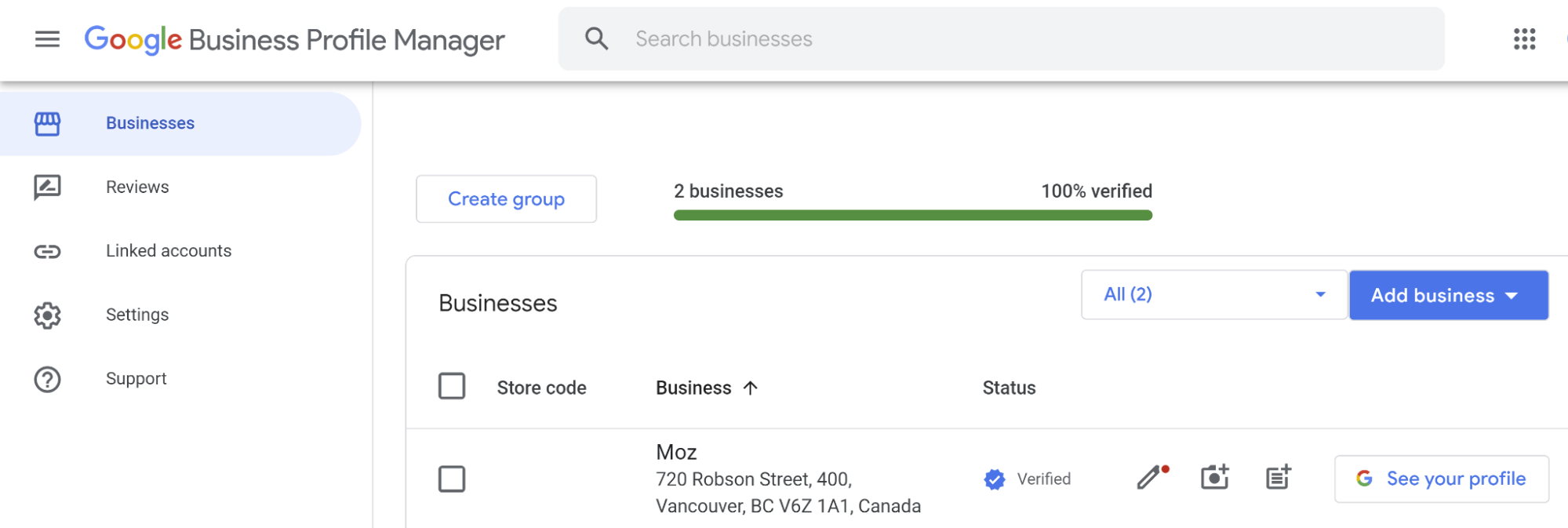
And now Google has ousted you from the familiar dashboard and tossed you into the chilly, unfamiliar pool of in-SERP listings management which we’re calling the New Merchant Experience and which looks like this:
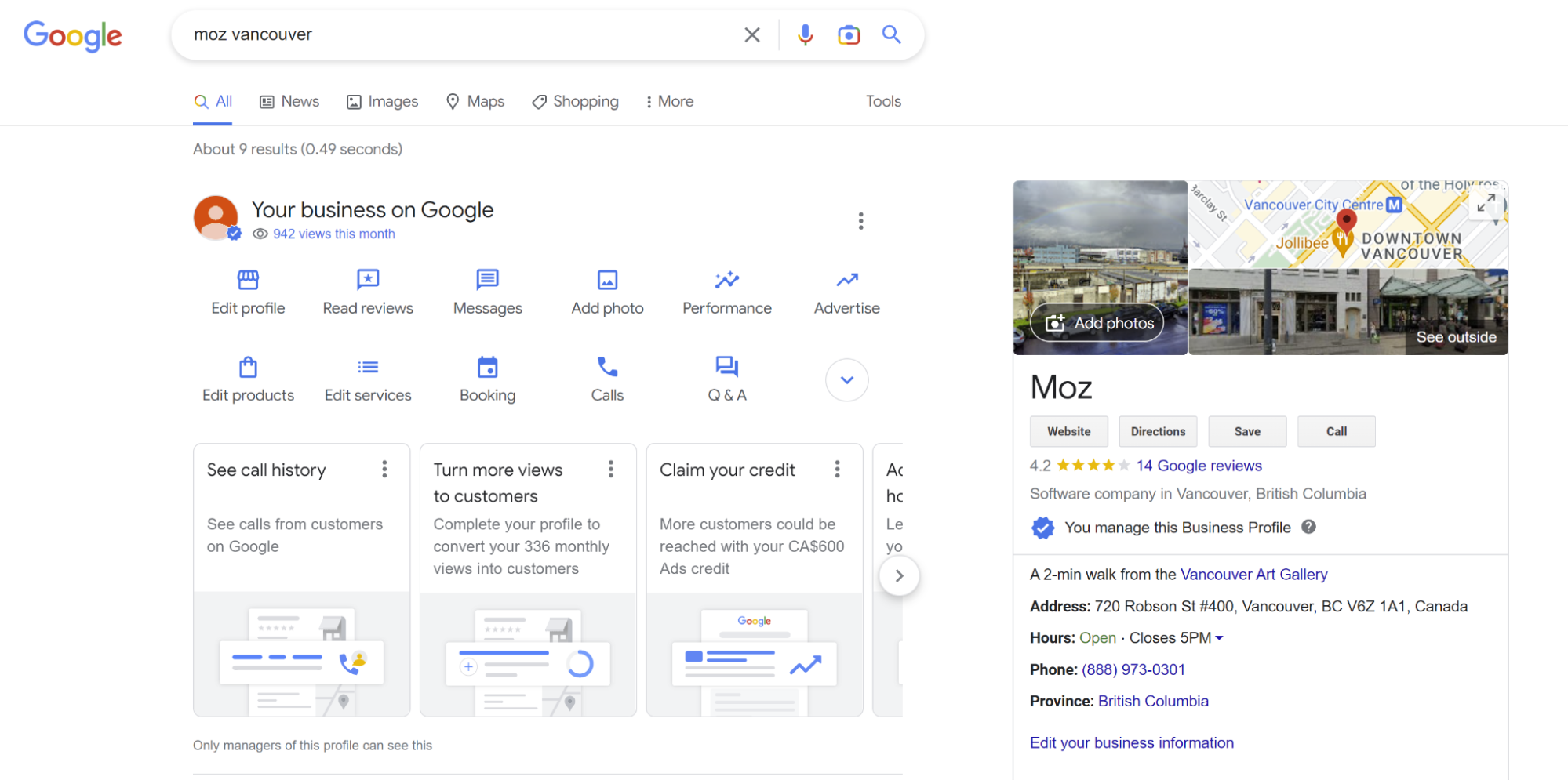
You might rightly remark that major change was the last thing you needed right now as a local business owner or marketer. But, deep down, you know you’re going to have to get the hang of this sometime, and this column is here to help you with that. After all, with estimates as high as 70% - 80% of local business leads happening right within Google’s interface, you can’t ignore GBP. Instead, you’ve got to learn to control every bit of it that you can. This article will take you through the most common features of these listings, explain what you can and can’t control on them, and teach you how to manage controllable features in the NMX.
If, after reading this cheat sheet, you find you just can’t stand the clutter of trying to manage your listings via the NMX amid the crowded organic SERPs, remember that listings management software like Moz Local still offers the niceties of a clean, organized dashboard for those who require a quieter workspace.
Core features on most Google Business Profiles and NMX interfaces
There is significant variation of Google Business Profile and NMX features based on business industry and category. For example, hotel listings have elements that aren’t included in listings for plumbers or grocery stores. Google is continually experimenting with new features while demoting others. This section will cover some of the commonest elements available to most businesses.
Before we look at our graphic and key, it will help you to know that you can access the New Merchant Experience by searching within Google’s organic SERPs for the name of your business, or the name of your business + its city, or for the phrase “my business” while logged into your Google account.
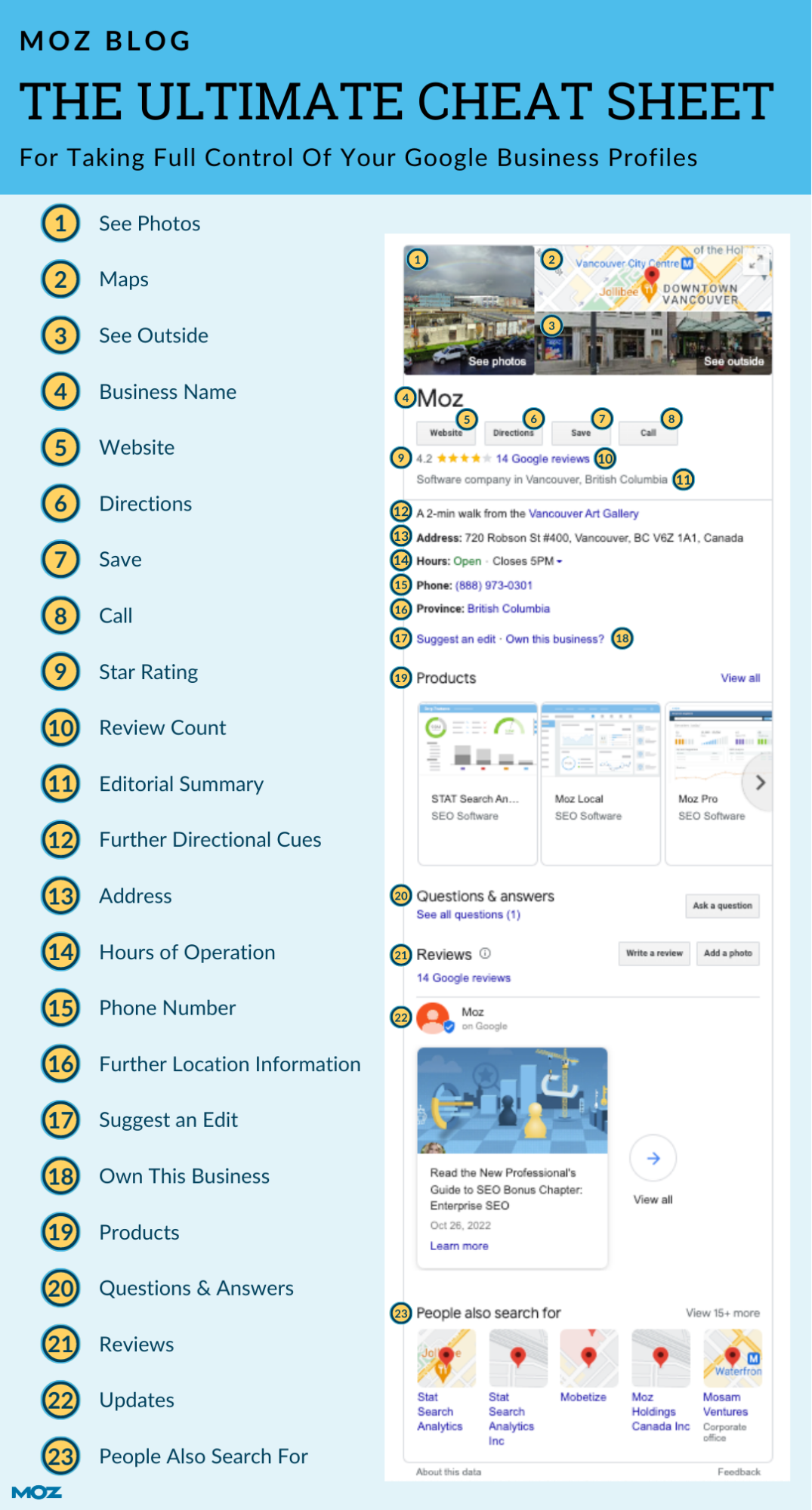
1. See Photos
When clicked on, this takes the user to both owner and user-generated photos in a set. Photos significantly impact CTR. Photos must be monitored for spam. You can also upload videos to your photos section, but try to post more than 2 videos so that you’ll get a separate mobile video subtab. It’s also important to know that previous versions of Google’s local product offered an analytical feature called “Photo Insights” but this no longer exists in the NMX.
Controllable?
Partly — photos are both an owner and crowdsourced element.
Where to control?
By clicking on the “Add Photo” link in the listing or the NMX, you will be taken to the following wizard for uploading different types of photos.
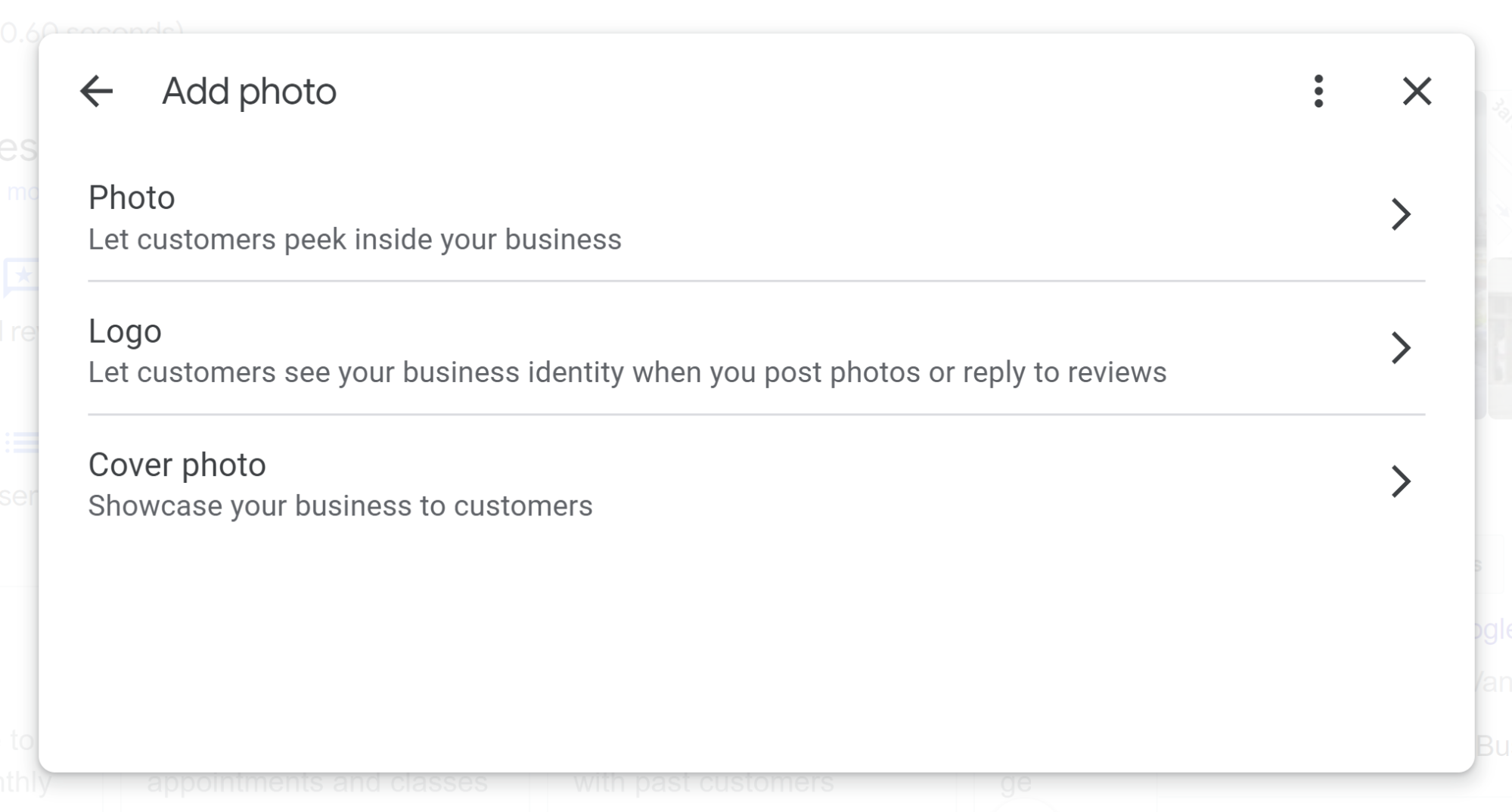
If you wish to view all your photos for the purpose of identifying user-uploaded spam, click on the image, itself, in the listing, rather than the “add photos” link, and you will be taken to the interface where you can both see and flag photos.
2. Maps
When clicked on, this takes the user to the Maps-based listing accompanied by map with pin. Be sure your map marker is correctly placed.
Controllable?
Partly — owner can correct misplaced map marker, but users can submit placement edits, too.
Where to control?
If your map pin is in the wrong place, click on the “Edit Profile” link in the new interface, then click the “Location” tab at the top of the “Business Information” pop-up, then click on the map.
3. See Outside
When clicked on, this takes the public to an interactive Google Street View visual of the business. When you are logged in, clicking on the feature takes you to this interface for uploading your own exterior imagery:
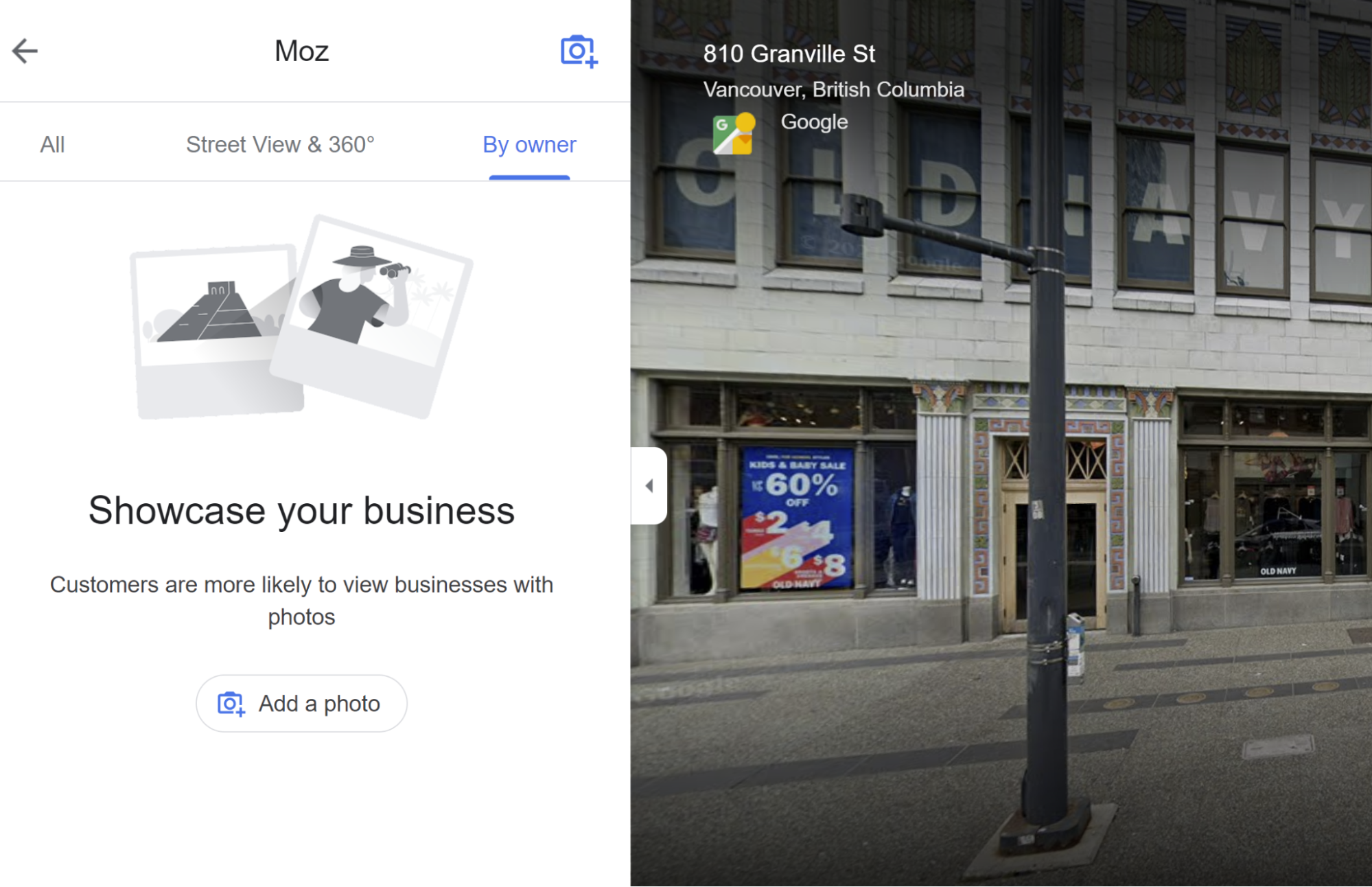
Controllable?
Partly — the owner can upload their own exterior shots, but cannot control StreetView. You can flag issues.
Where to control?
Click on the “see outside” section of the Google Business Profile to upload photos.
4. Business name
This must reflect the real-world name of the business and be formatted according to Google’s guidelines. If you’re marketing a service area business like a plumbing franchise without storefronts, your name should match what appears on your website.
Controllable?
Yes — the business owner provides, though the public can suggest edits to this feature.
Where to control?
In the NMX, click the Edit Profile link and mouse over your name in this popup to edit it in the About section:
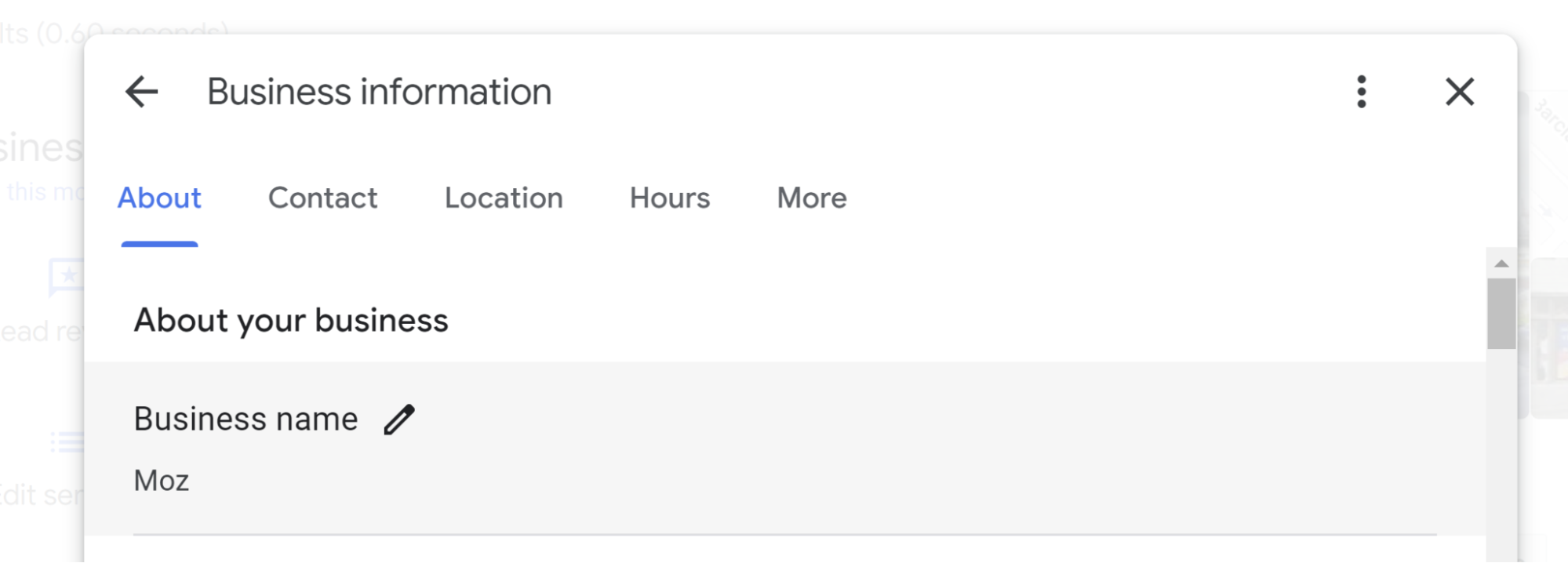
5. Website
This link takes you to whichever page of your website you’ve designated as the Google Business Profile landing page.
Controllable?
Yes — owner provides, though the public can edit.
Where to control?
In the NMX, click the Edit Profile link and mouse over your name in this popup to edit it in the Location section:
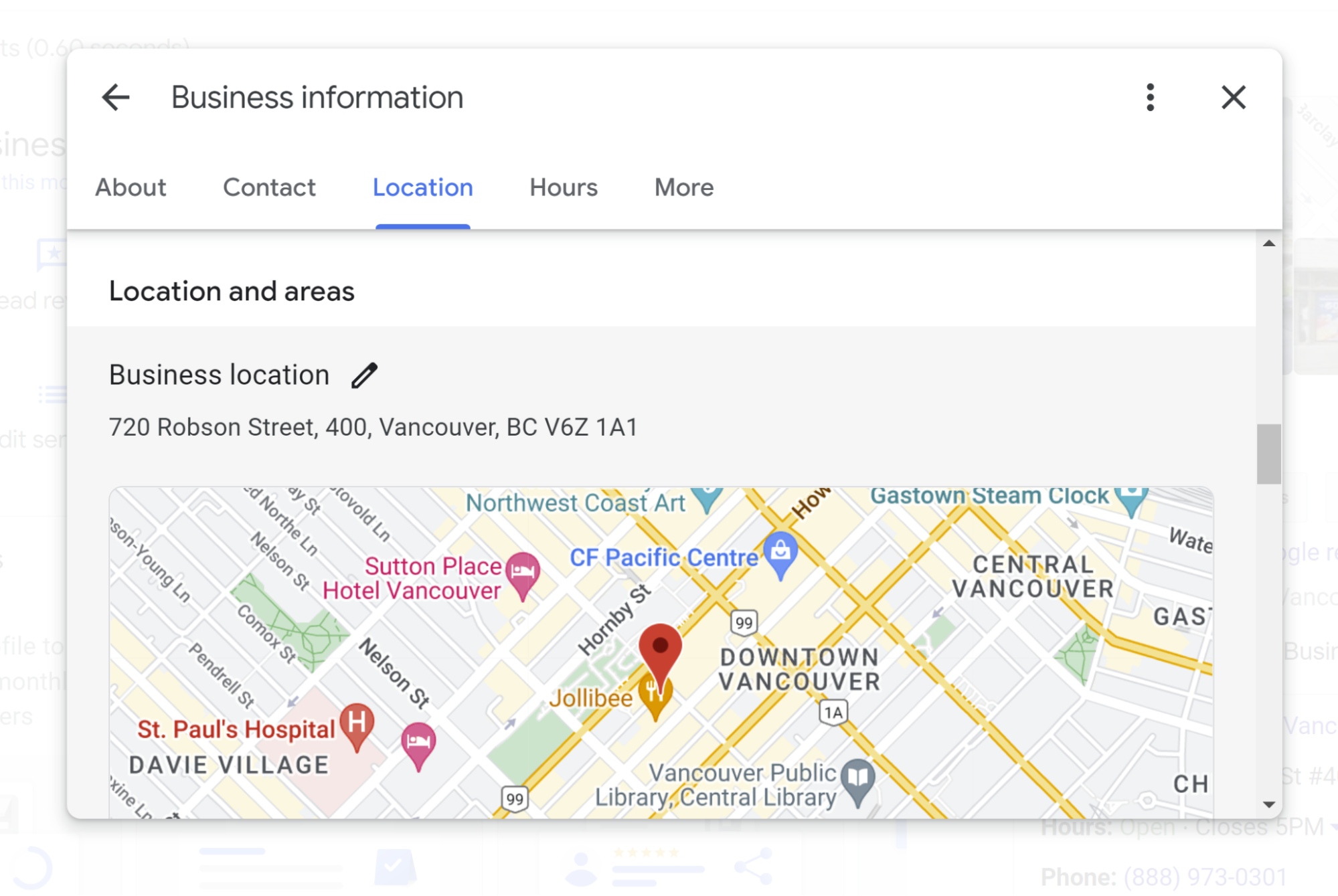
6. Directions
This link takes you to the maps-based driving directions from the user’s location to the place of business.
Controllable?
No. This experience is created by Google. However, see earlier advice if you need to move your map pin.
7. Save

When a user is logged into their Google account, clicking the “Save” button brings up the above pop-up, enabling them to store the business in their favorites or other areas like places they want to go or are planning to travel to.
Controllable?
No — Businesses do not control whether customers utilize the “Save” function.
8. Call
On mobile devices, clicking the “call” button automatically triggers a phone call to the business. On desktop, it brings up this popup asking the user to pick an app with which to start the call.

Controllable?
No — beyond ensuring that your phone number is accurate, this is not an area controlled by the business.
9. Star Rating
Google uses a simple mathematical average to calculate the overall rating of a business on the basis of all the star ratings reviewers have given the business. The star rating is considered the #1 review factor that customers use to differentiate one local business from another.
Controllable?
No — businesses cannot directly control or alter the star ratings they receive. Providing excellent customer experiences is the best way to earn the kind of reputation that results in a high Google Business Profile star rating.
10. Review Count
This is a simple count of the total number of Google-based reviews the business has received. Surveys indicate that consumers can become suspicious when any local business has either too few or too many reviews compared to its competitors. When clicked on, the review count takes the user to the main review overlay, which we will cover in full below.
Controllable?
No — the business cannot directly alter the count of its reviews, but can implement a review acquisition program to increase its total number of reviews over time.
11. Editorial Summary
This is one of the more diverse elements of the GBP. In our initial example, a common format is shown of Google taking the primary category and combining it with location information, like this, near the top of the listing:
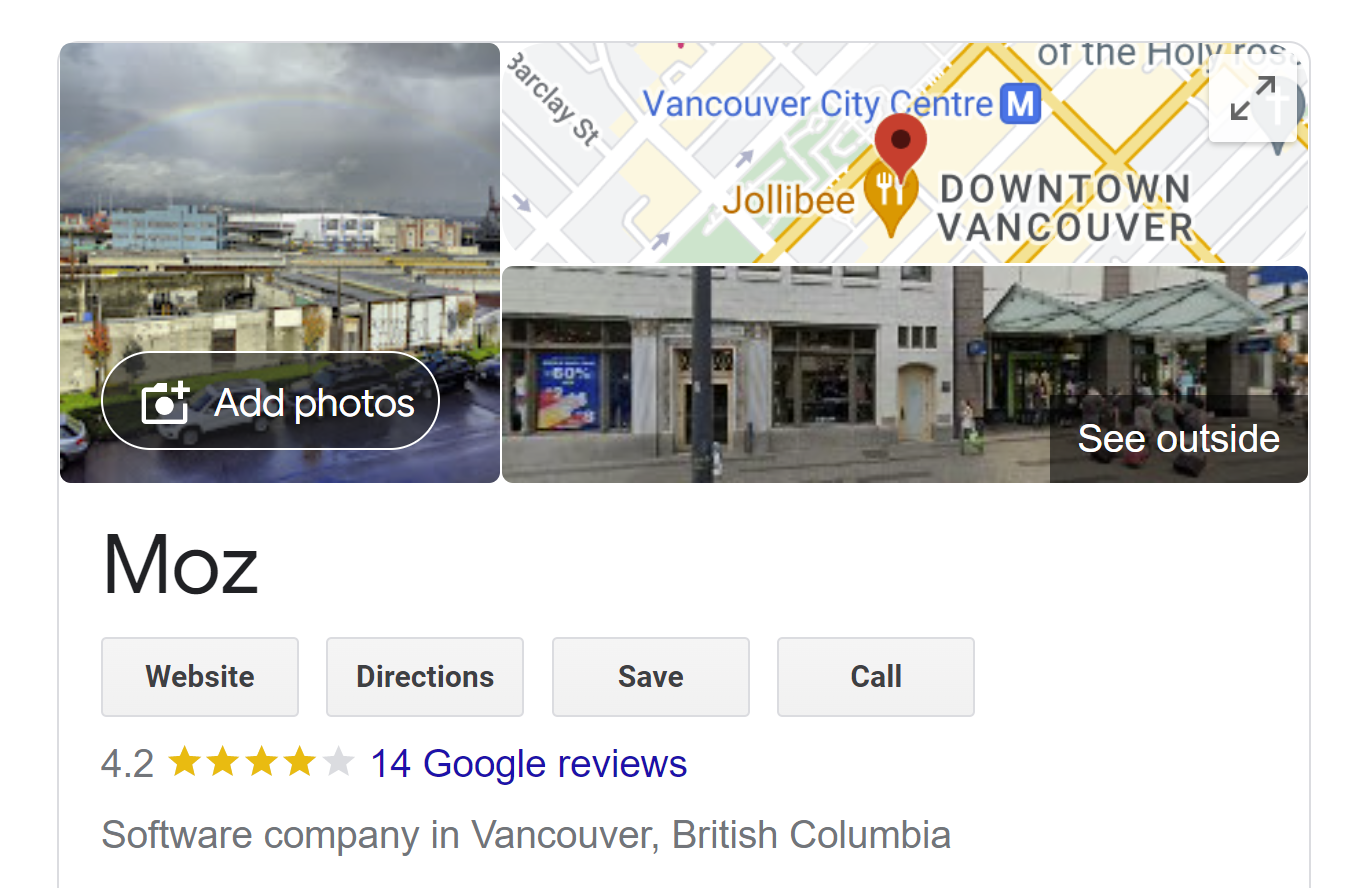
However, other iterations may also be considered editorial summaries, including this example which cites a third party like Wikipedia and may appear further down in the listing:
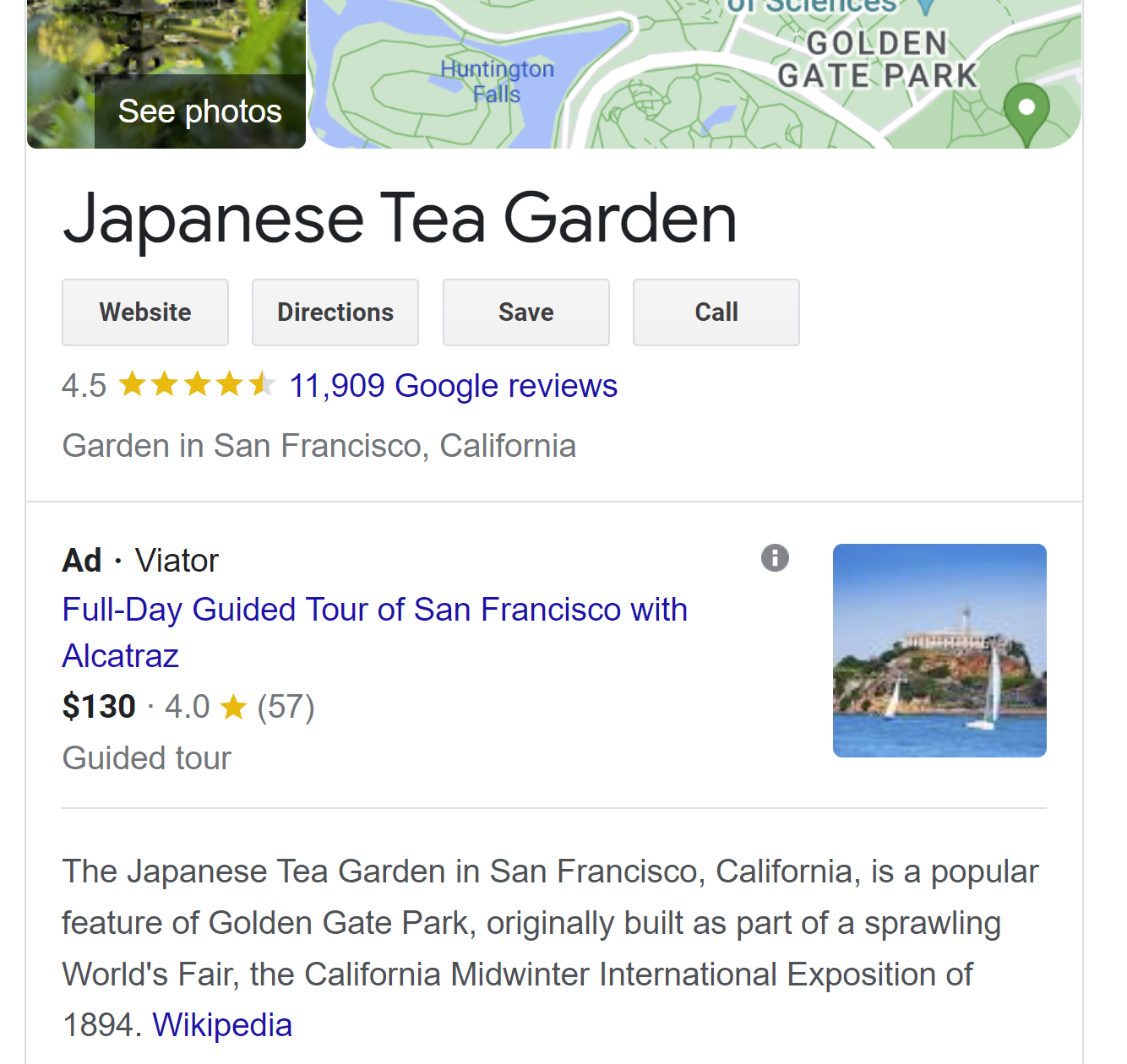
And there is at least one other version that may appear within the reviews section of the listing, specifically cite Google as the originator of the summary, like this:
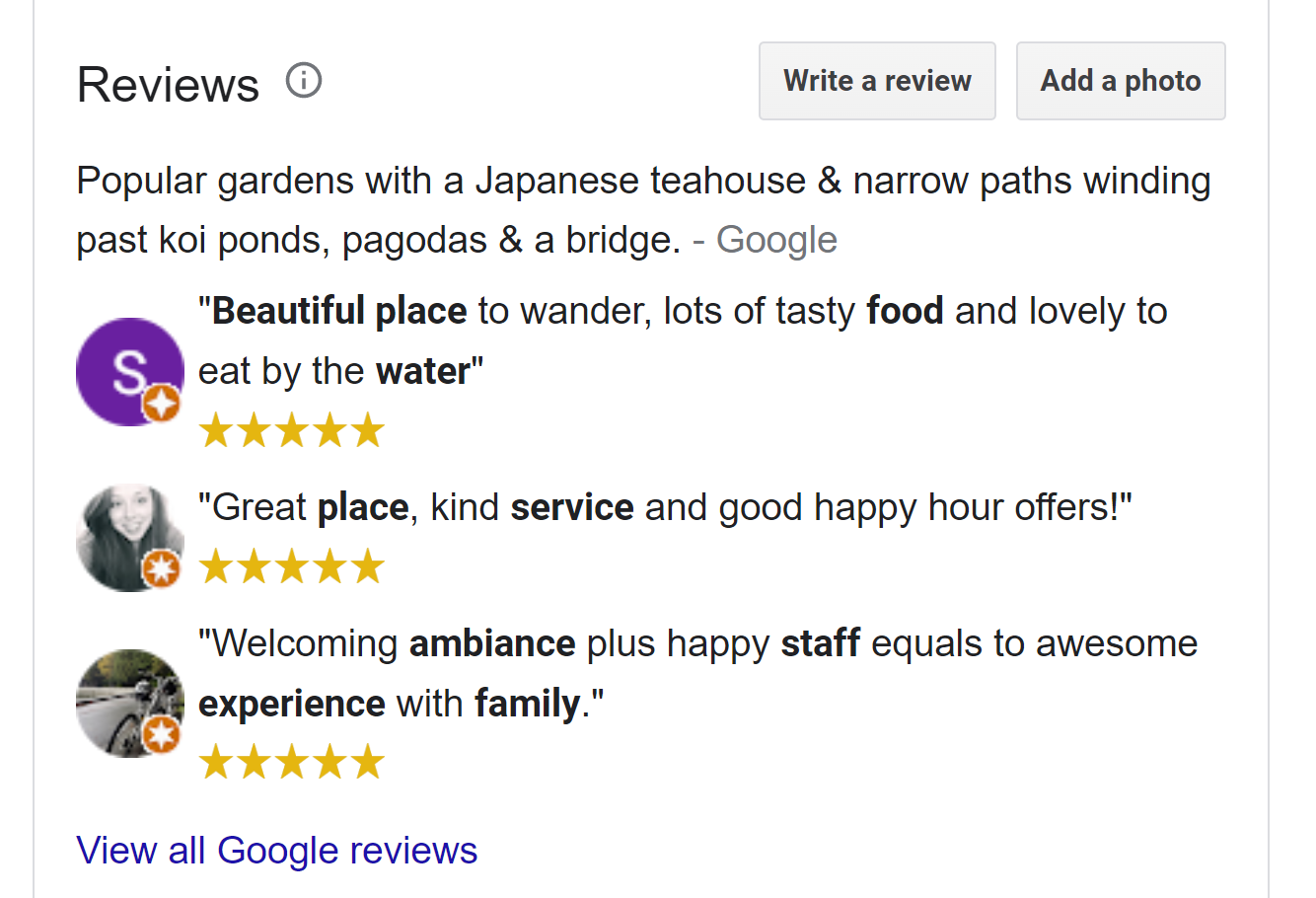
The nomenclature for these elements is loose, and Google may well have unique internal names for all three instances.
Controllable?
Partly — in the case where the primary category is included in the summary along with location information, the business is contributing the information that yields that summary, and in the case of well-known entities that have control of a Wikipedia page, there would be some editorial control built into the source from which Google is deriving the description, but overall, it is Google who generates these summaries.
12. Further Directional Cues
This is a feature which only appears on some Google Business Profiles. In this example, the user is being given information about the walking distance to nearby major local attractions with embedded links to those venues.
Controllable?
No, but do be sure your map pin is correctly located so that Google can easily identify whether your business is located near to local attractions.
13. Address
For brick-and-mortar businesses, this line must display a genuine, physical address that complies with Google’s extensive guidelines. For service area businesses that don’t serve customers at the company’s premises, Google wants the address to be hidden, and instead of showing a street address, an “area served” section like this will typically be shown:

Controllable?
Yes — brick-and-mortar business owners provide their address, though the public can suggest edits to it. Google has a dedicated page of instructions regarding listing and editing addresses.
Where to control?

From the NMX, click on “Edit Profile” and then the “Location” tab to edit your address. This is also where the toggle is located to hide or display your address.
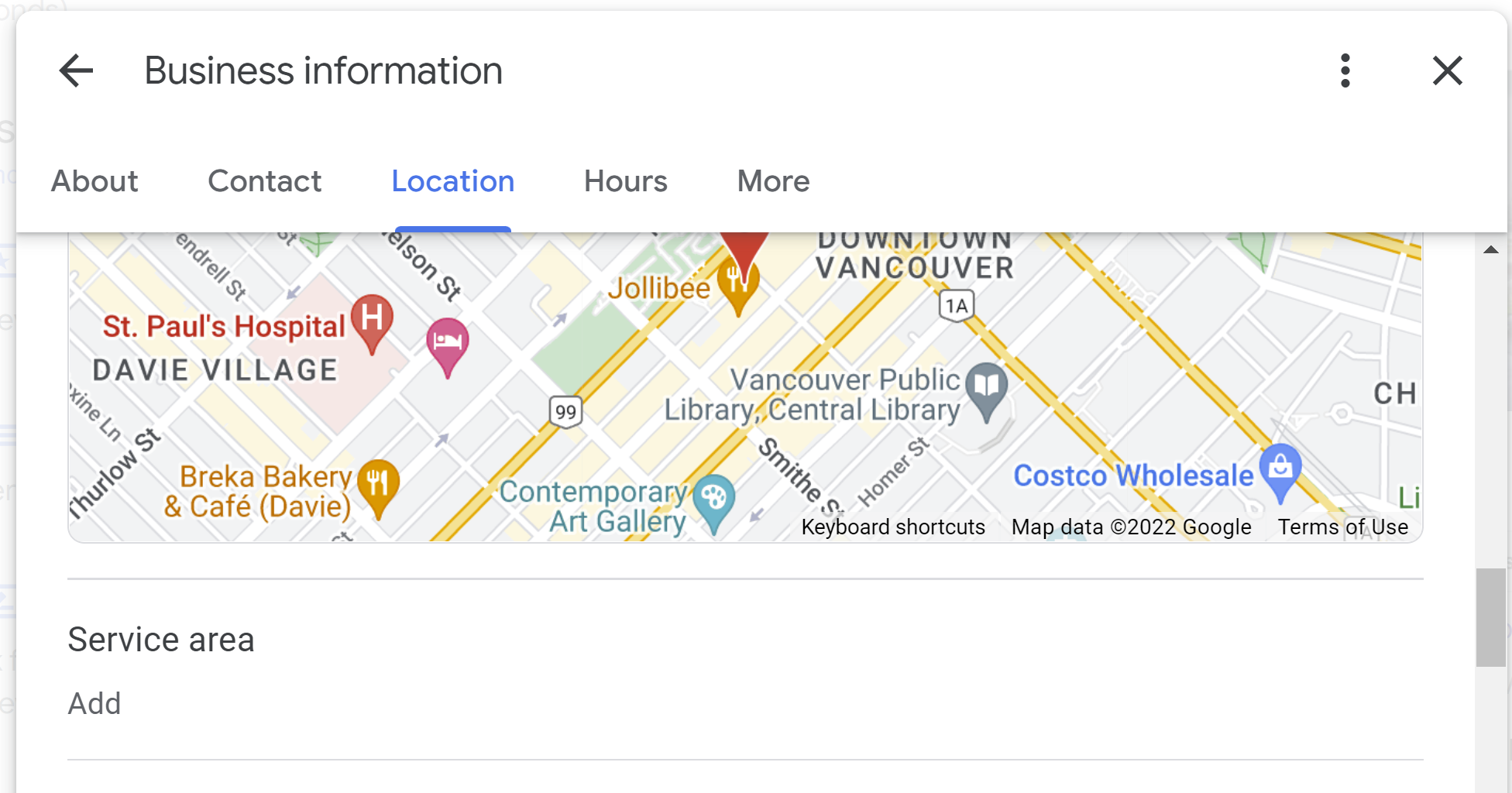
For service area businesses, the place to edit your information is also located in the “Location” tab of the NMX. You can add up to 20 locations describing your service area, but its overall boundaries shouldn’t extend beyond about 2 hours of driving time.
14. Hours of operation
One of the key ways in which Google Business Profiles provide customer service is via the presence of accurate hours of operation. Be sure yours are kept up-to-date at all times, so no customer is inconvenienced by arriving at your premises to be greeted by a “closed” sign.
Controllable?
Yes — businesses add their hours, though the public can edit them. Businesses can also set special hours for holidays.
Where to control?
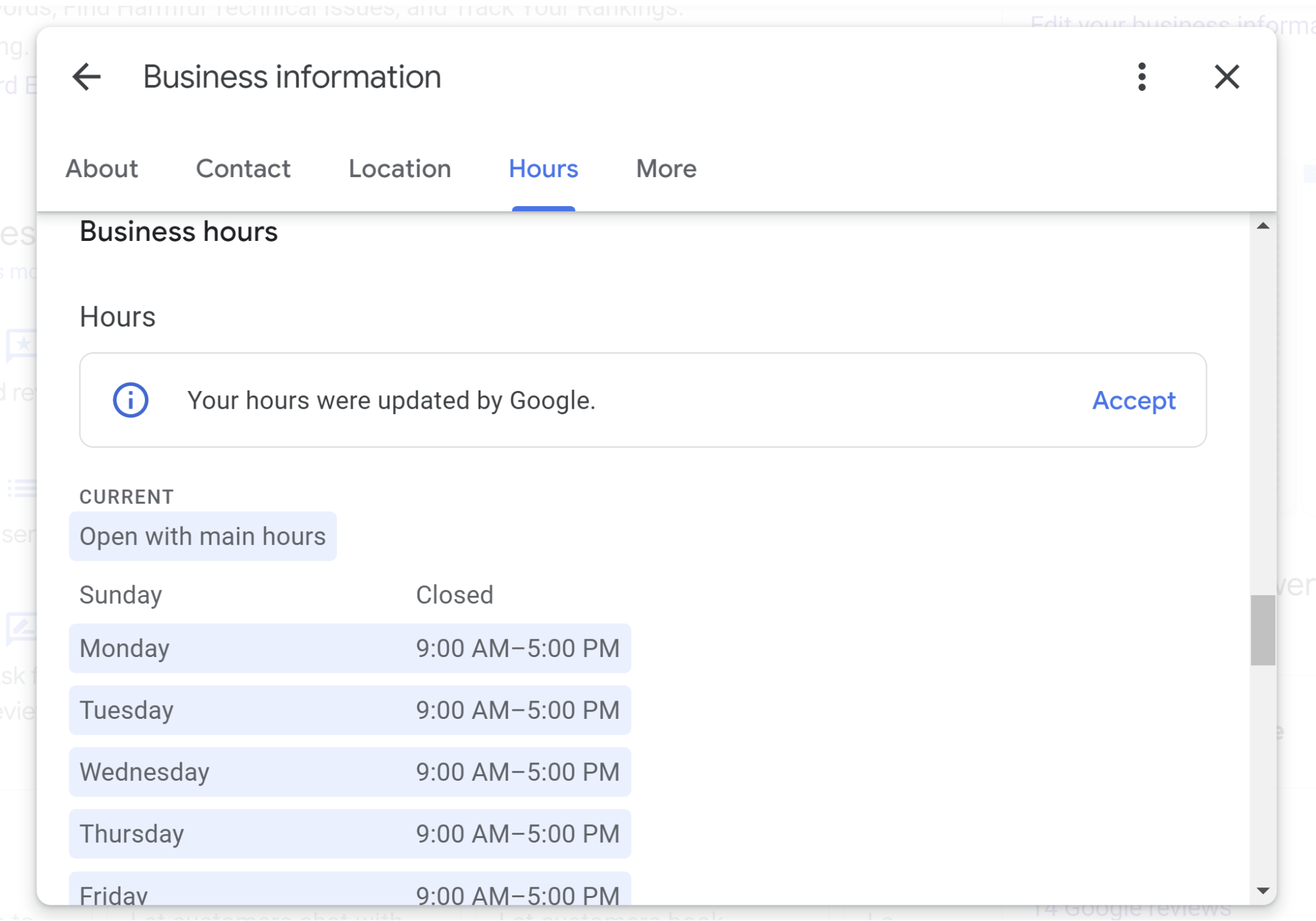
From the NMX, click on “Edit Profile” and then the “hours” tab to edit your information. You will also find a feature there for adding further special hours:
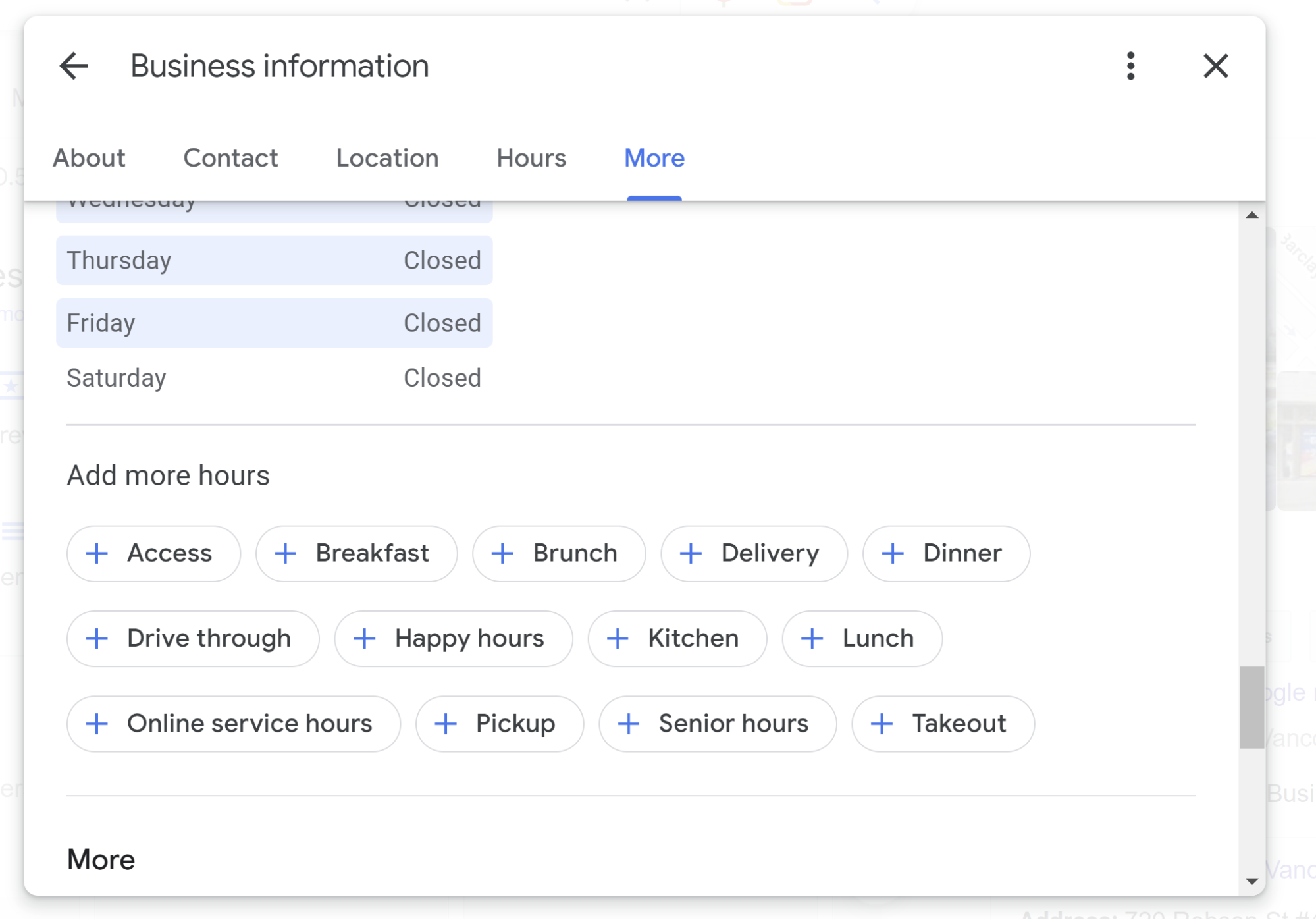
15. Phone
You can add a primary phone numbers and additional phone numbers to your listing. Google prefers that you use a local phone number rather than a call center helpline whenever possible, and they want your listed number to be in the direct control of your business. Your number can be either a landline or cell phone number, and it’s a best practice to be sure that whatever number you list is answered by staff who say the name of the business when they pick up. It’s not a good practice to have more than one business share the same phone number. For example, if you own both a Christmas tree farm and a woodworking studio on the same property and are listing each business separately, each business should have it’s own phone number. Premium-rate telephone numbers that charge callers high rates aren’t allowed.
Controllable? Yes — the business lists their numbers, but the public can suggest edits to them.
Where to control?
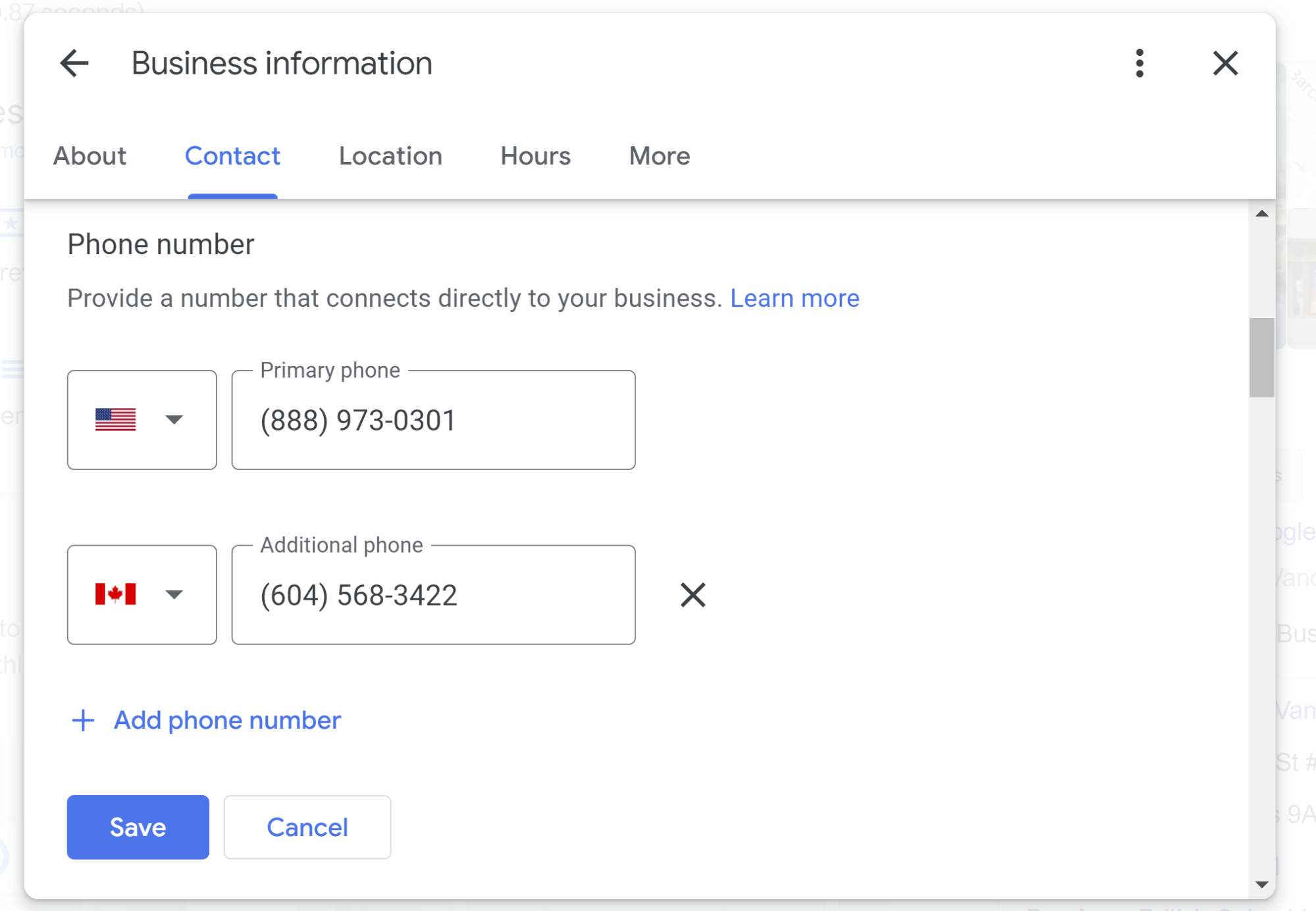
In the NMX, click “Edit Profile” and then “Contact” to see and edit your phone numbers. Related to this, the NMX also has a button labeled “Call”. When clicked on, this button will ask you if you want to enable Google’s call history feature, which you can read more about here:
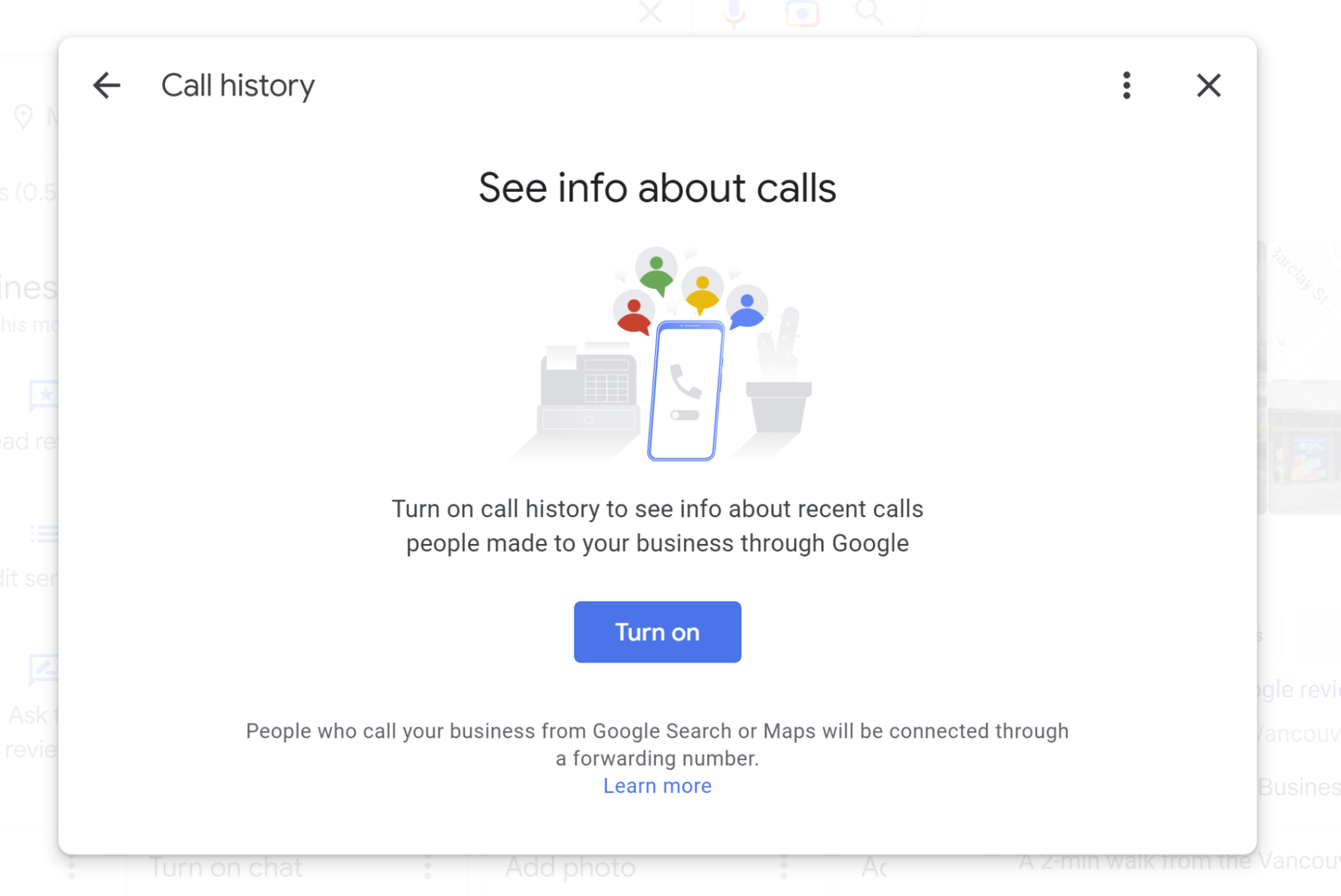
16. Further Location Information
In our example, Google is providing additional location information. Some listings will have a province or county listed in this area. Others will have a different special feature called “located in” that can appear when a business or department is contained within another entity, like the parts department inside an automotive dealership:

Controllable?
Partly — the information about your province or county relates to the physical address you provide, but the separate “located in” feature can only be edited via Google Maps. If you wish to edit this feature, find your listing on Google Maps, click the “suggest an edit” button, and look for the “located within” area of the editor:
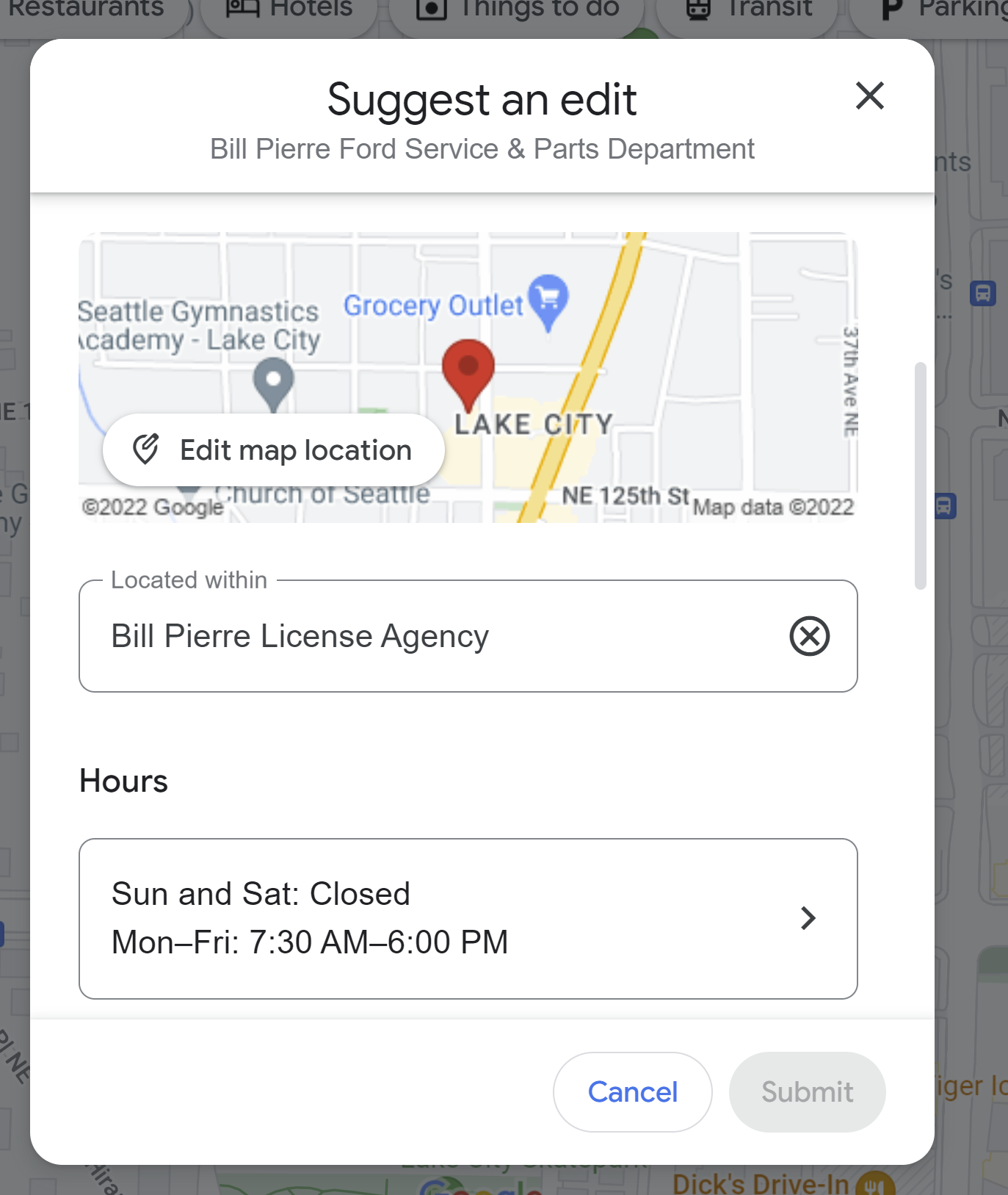
17. Suggest an edit
This function is available to any member of the public who wishes to suggest an edit to the listing. For example, an individual can let Google know they think your address, or hours of operation, or phone number is wrong.
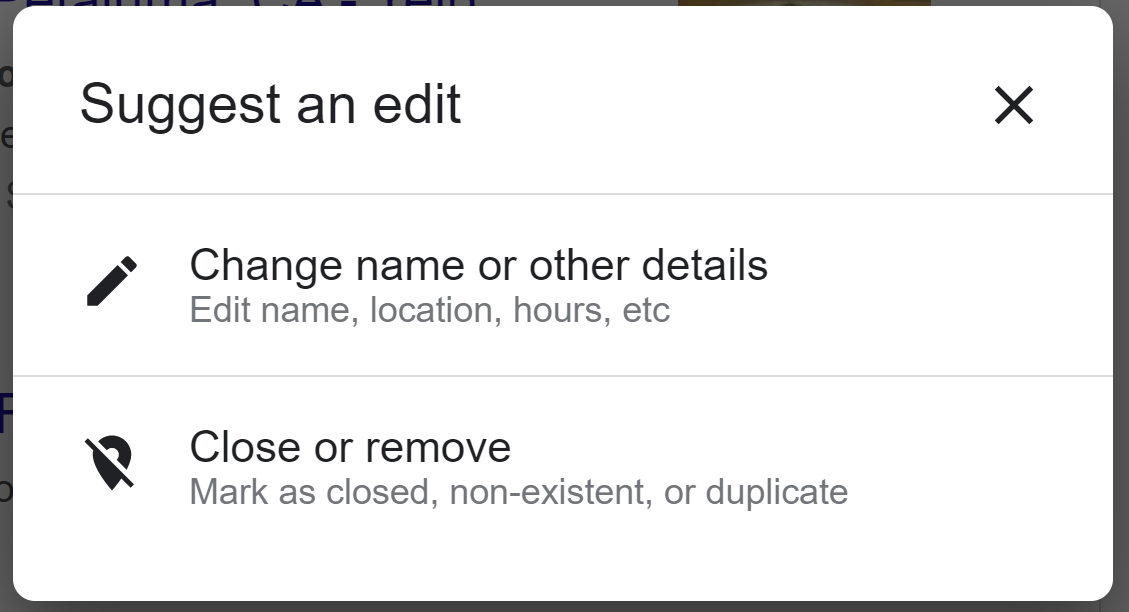
Controllable?
No. Unfortunately, the suggest an edit feature is a cause of confusion and stress for many local business owners who have no control over whether or not members of the public suggest edits to listings. The difficulty of the scenario is summed up well by this Diamond Product Expert in Google’s help forum:
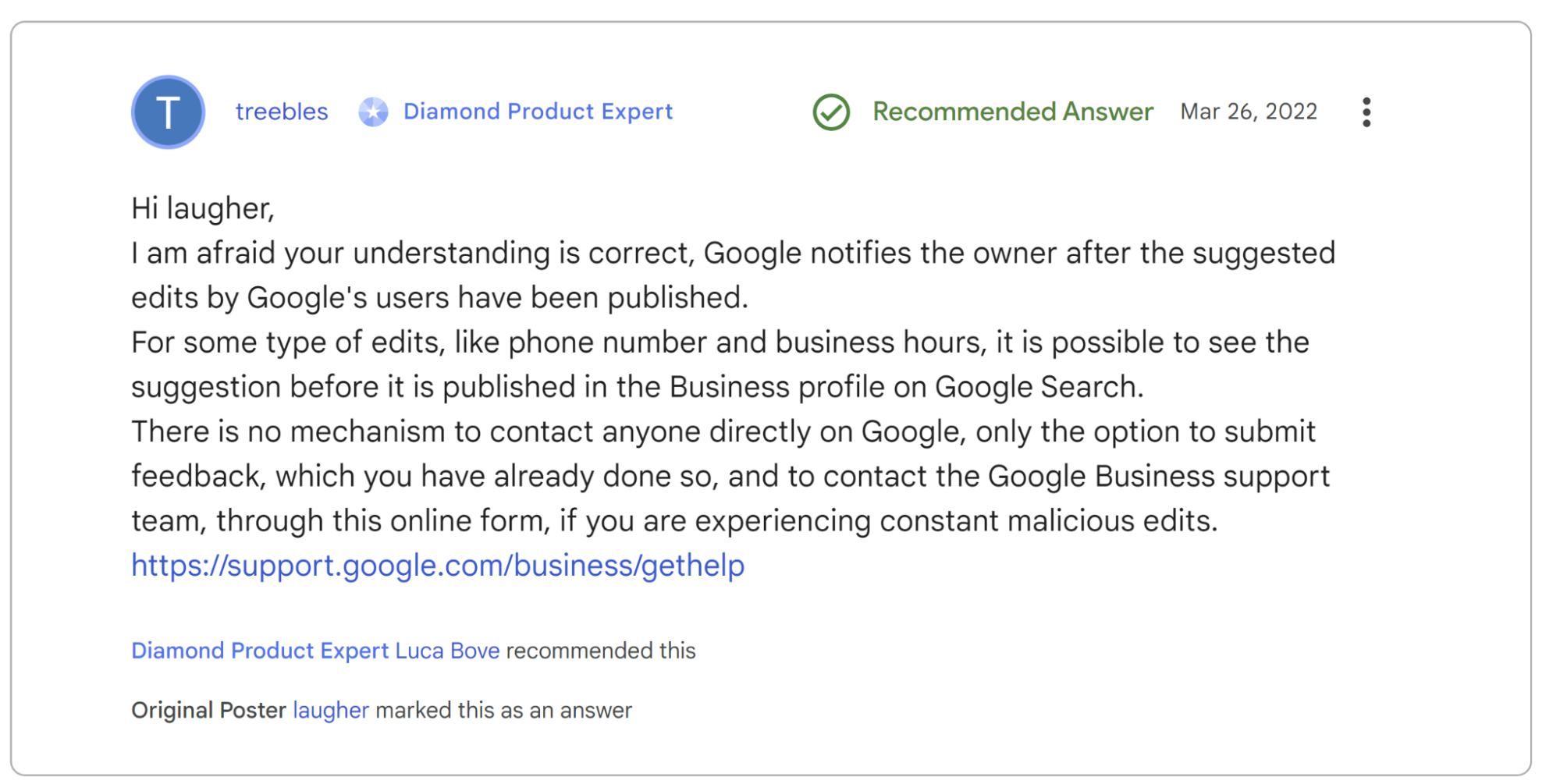
18. Own this business?
If you see this link on a listing, you either haven’t claimed the listing in question or are not logged into the account you used to claim the listing. Claiming a listing is the terminology for verifying with Google that you are authorized to take control of the management of a listing for a specific business. If, however, you are logged in properly and have already claimed the listing, you should see this link, instead:

Controllable?
Yes — you can claim listings you have the authority to represent and once you have claimed them, you can use the edit link to be taken to the NMX to edit your listing at any time.
19. Products
You can greatly enhance your listing by adding products to it representing key offerings in your inventory. These can be physical products, like retail goods, digital products, like software, or intangible products, like home services. You can add a price, description, buttons, and links for more information.
Controllable?
Yes — you can add products.
Where to control?
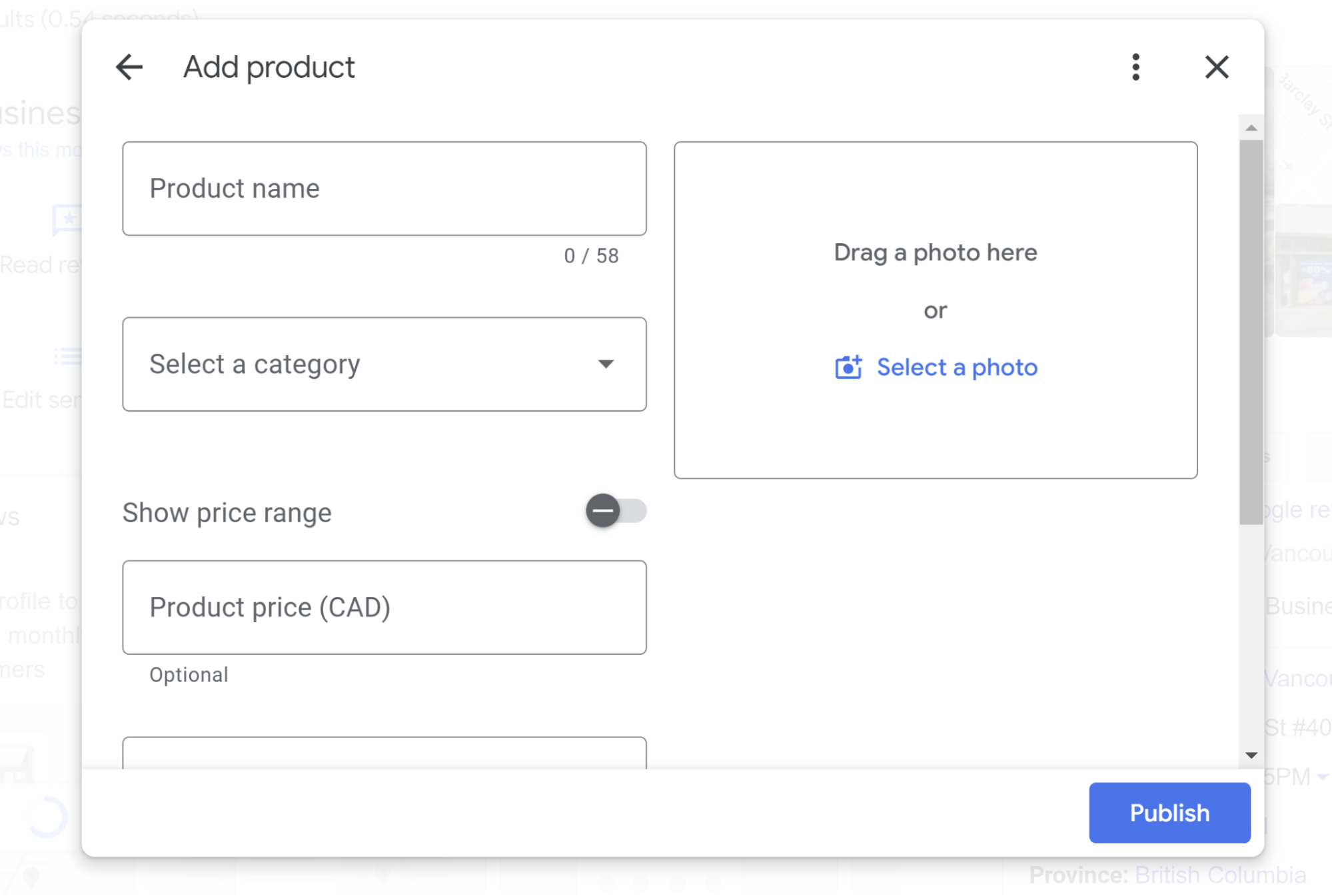
In the NMX, click “Edit Products” then click, “Add product” to be taken to the product editor.
20. Questions & Answers
Businesses are permitted to use this feature to upload questions they commonly receive and answer them. The public can also ask questions and answer the queries others have submitted. It’s important to continuously monitor this area of the GBP to be sure that questions from the public are receiving timely, authoritative answers from your brand, rather than random answers from the public which may or may not accurately reflect the business.
Controllable?
Partly — you can ask and answer questions but the public can also both ask and answer.
Where to control?

To add and answer questions, click the “Q&A” link in the NMX and you’ll be taken to this interface where you can either ask or answer questions.
21. Reviews
Reviews and owner responses are some of the key features that turn a static local business listing into an interactive two-way medium. For deep insight into the best strategies for review management, read The Impact of Local Business Reviews on Consumer Behavior | SEO Industry Report, but in brief, reviews are the main online seat of local business reputation, they influence local search rankings, and ratings, review text, and owner responses all have significant impacts on customer journeys. To avoid reputation damage and litigation, all review management practices must align with platform guidelines, like Google’s content guidelines, as well as the laws, like FTC guidelines, governing your country.
Controllable?
Partly — you can request reviews and respond to reviews, but you cannot control whether customers leave you reviews and you are not permitted to review your own business or incentives others to do so. Fraudulent reviews can be reported to Google in hopes of removal.
Where to control?
The NMX has several different menu items related to reviews, including “read reviews” and “ask for reviews”. Clicking on the former will take you to the entire review overlay, with “reply” functionality so that you can respond to each review or rating you receive:
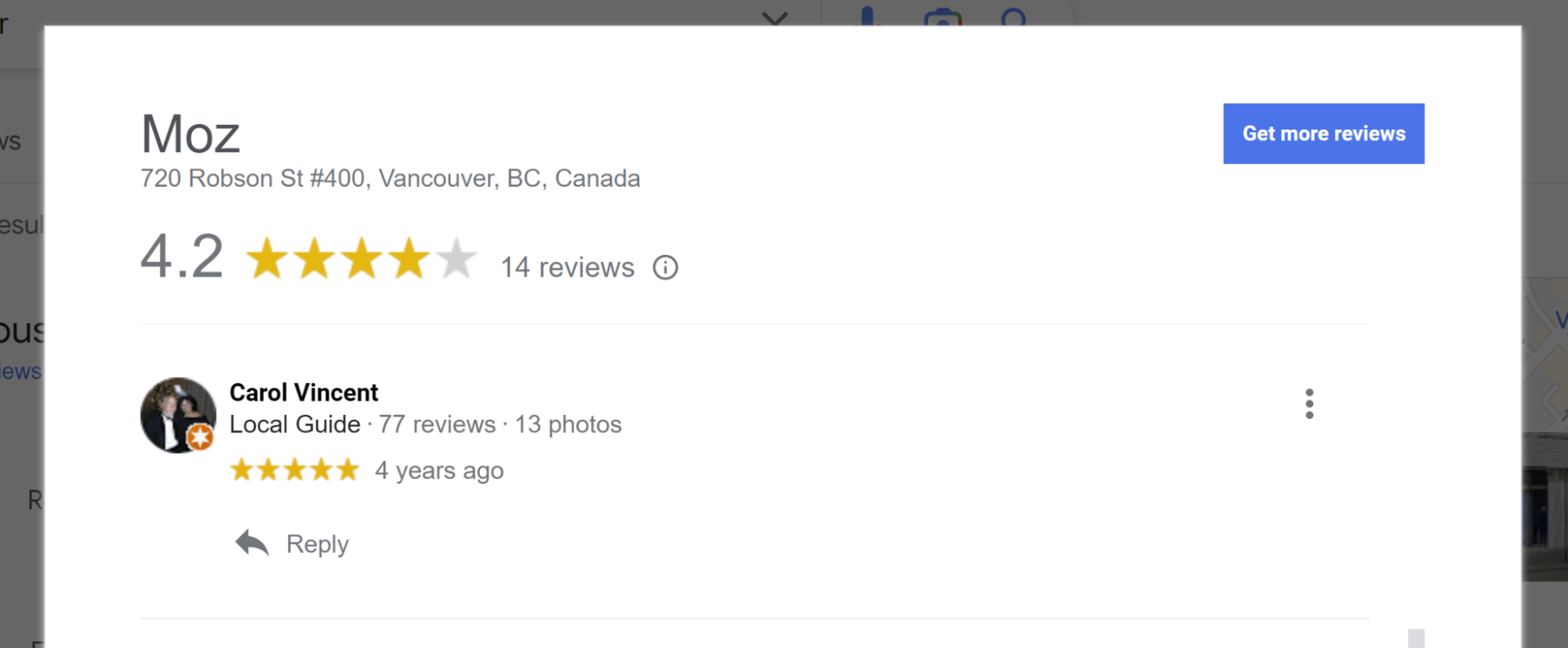
Clicking on the latter will take you to a popup that generates a handy link to your review profile, with prompts to share that link via vehicles like email, WhatsApp or Facebook:
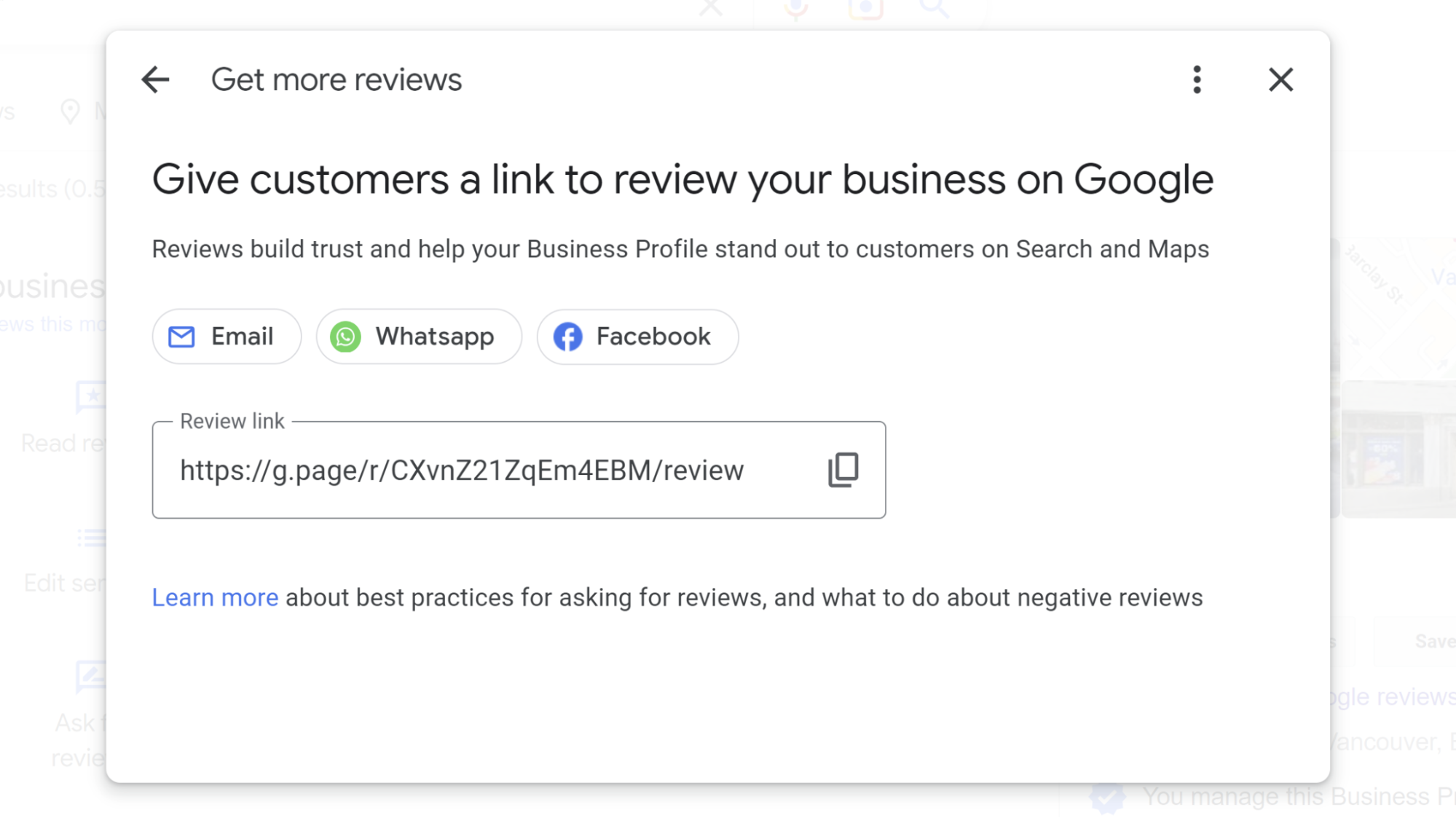
22. Updates (formerly known as Google Posts)
This feature is like a microblogging function located directly within your Google Business profile. It enables you to post new content to your listing on a regular business.
Controllable?
Yes, most business types (with some exceptions) can write updates.
Where to control?
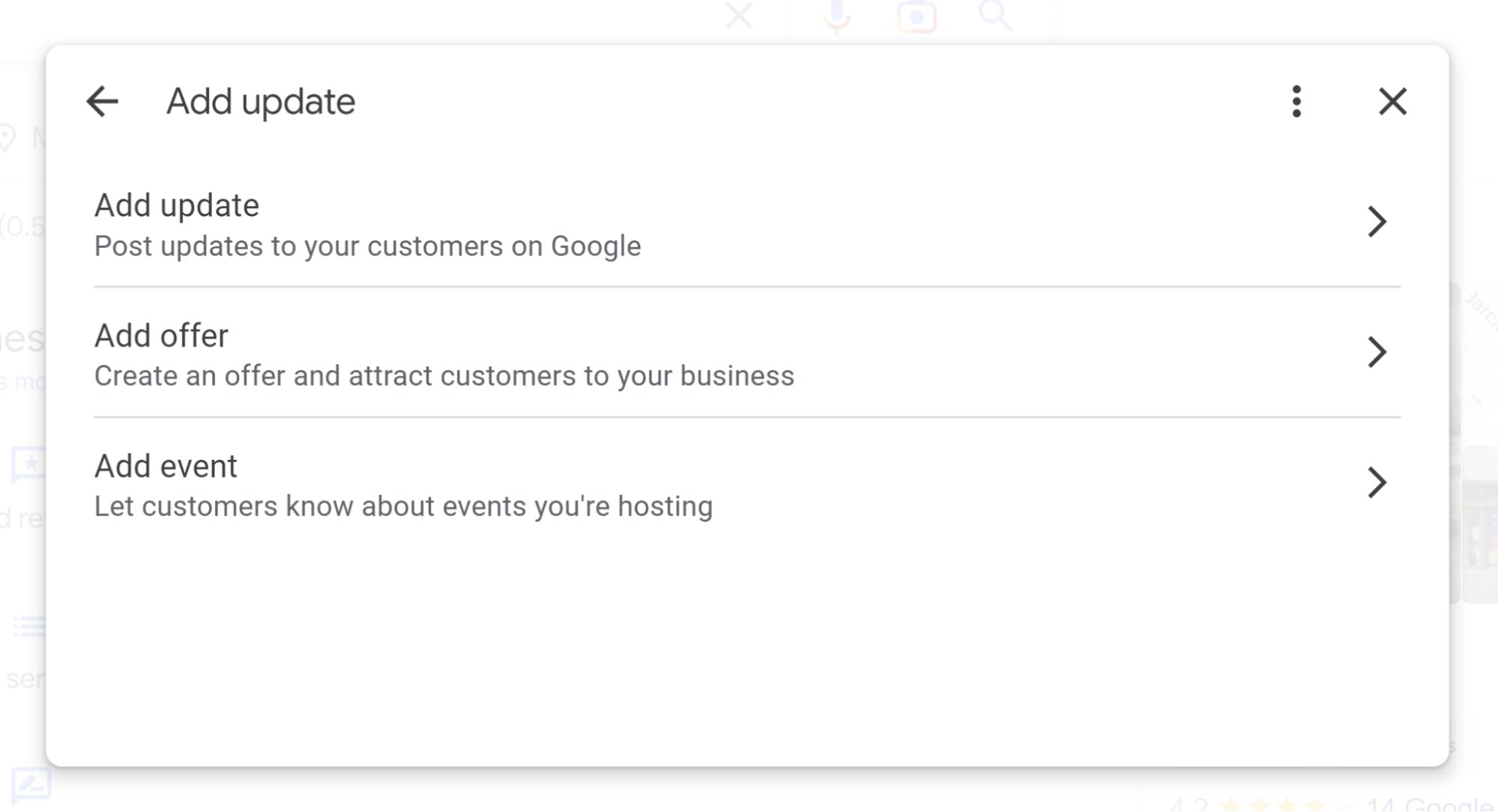
Click the “add update” link in the NMX and you’ll be shown three types of posts you can write: updates, offers, and events. The first lets you add an image, a description, and a linked button and will stay live for six months before being archived. The second includes all these fields, plus a date range setting for the period in which your offer is live, and additional informational fields to further explain the terms of your offer. The third type includes fields for information like when your event starts and ends. Some listings may also feature discontinued post types.
23. People Also Search For
This is one of those areas that makes it clear that local business rent space from Google rather than owning it. Chances are, if you owned your Google Business Profile, you wouldn’t feature your competitors on it, but this is just what Google does.
Controllable?
No — you have no control over which competitors Google shows in this section of your listing.
Additional GBP and NMX Features
Some business categories have unique Google Business Profile features or elements we haven’t yet covered. The New Merchant Experience also includes some other functions we’ve yet to explore. Let’s dive back in!
Categories
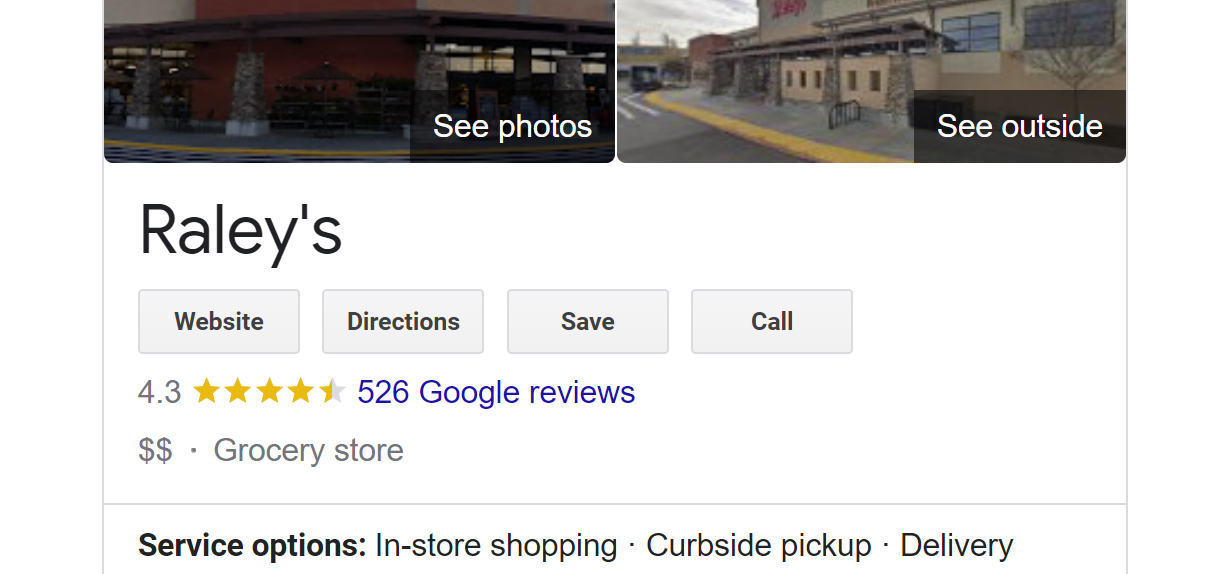
Categories may be the most important feature that you control when it comes to the search phrases you want to rank for, and categories also determine many of the fields you’ll have in your Google Business profile. Your primary category may appear on its own near the top of your GBP, but it also may appear as part of your editorial summary. In order to see all of your categories live, you have to head over to Google Maps. There, by using a Chrome extension like GMBSpy, you can see all the categories both you and your competitors are using.
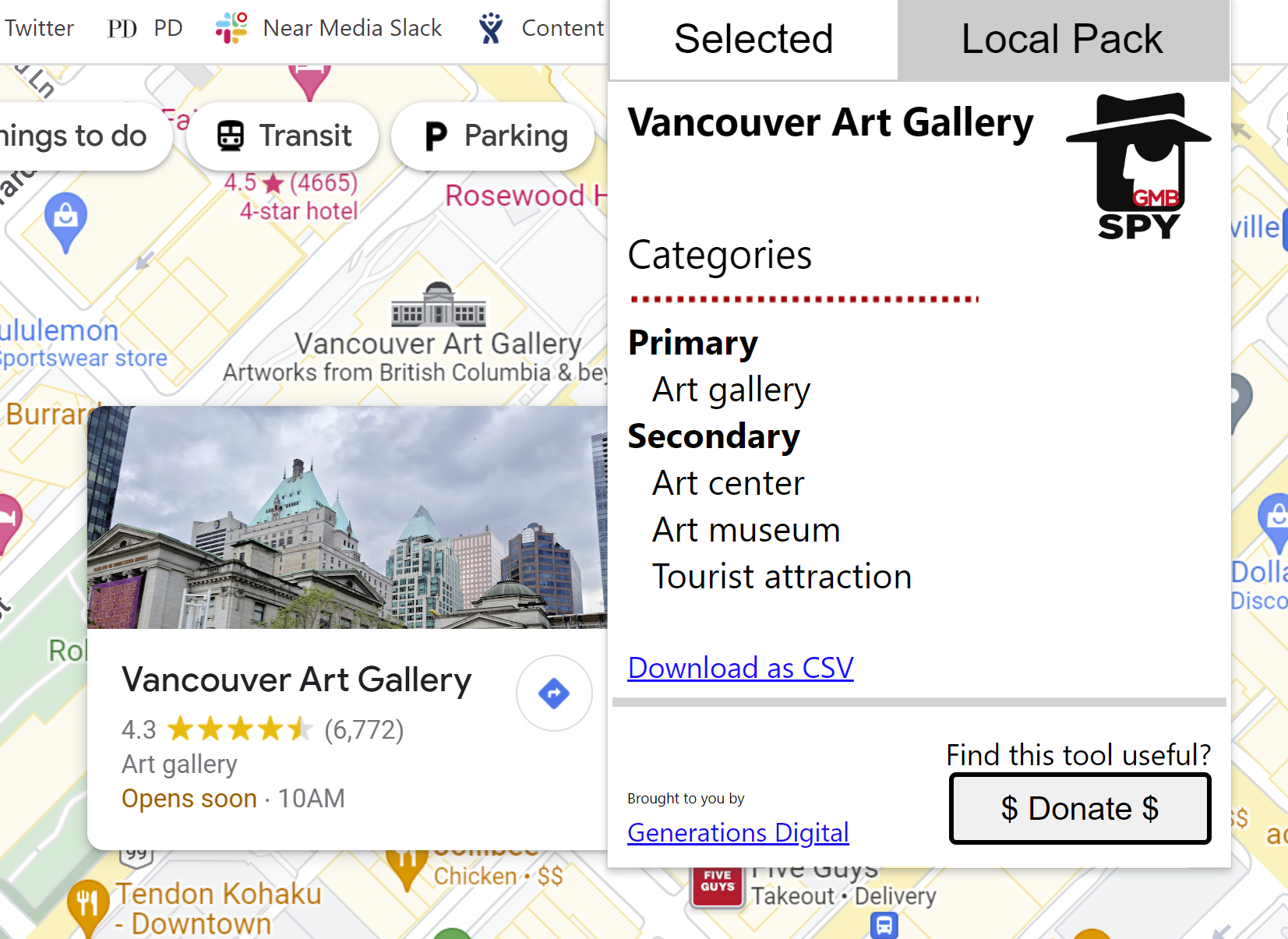
Controllable? Yes — businesses can choose primary and secondary categories.
Where to control? Click on “Edit Profile” in the NMX and edit your categories under the “About” tab.
Attributes
This is an experimental area of GBPs to which Google is always adding so that both businesses and the public can further define the characteristics of the business. Attributes can include information about who owns the business, or amenities, such as whether a building has gender-neutral restrooms, or protocols, such as whether an appointment is required to visit a business, or layout information, such as the presence of wheelchair-accessible entrances.
Controllable? Partly — businesses can add a great many attributes by clicking the “Business Information” tab in the NMX and then going to the “More” section. However, Google also crowdsources attributes from the public.
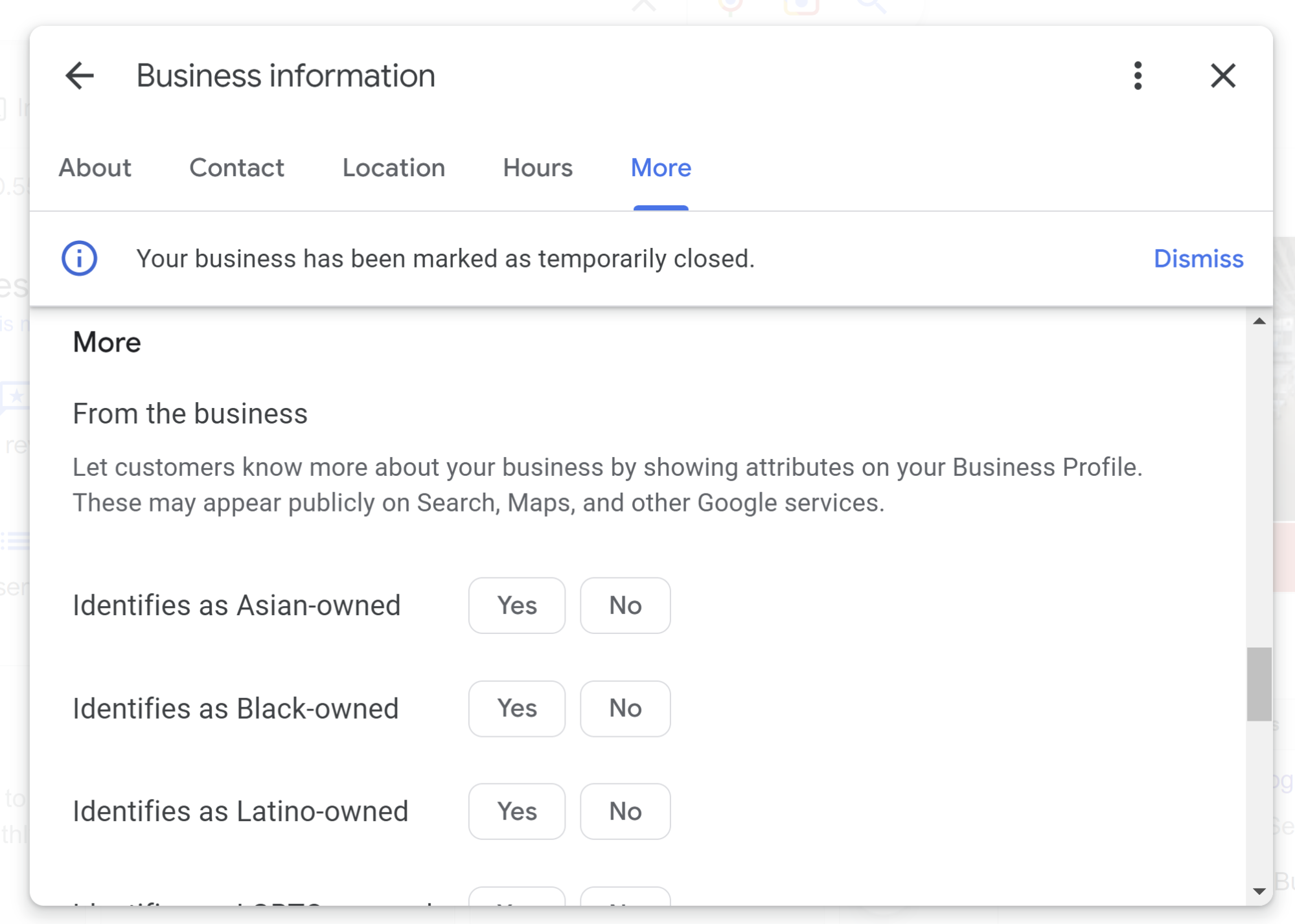
Description
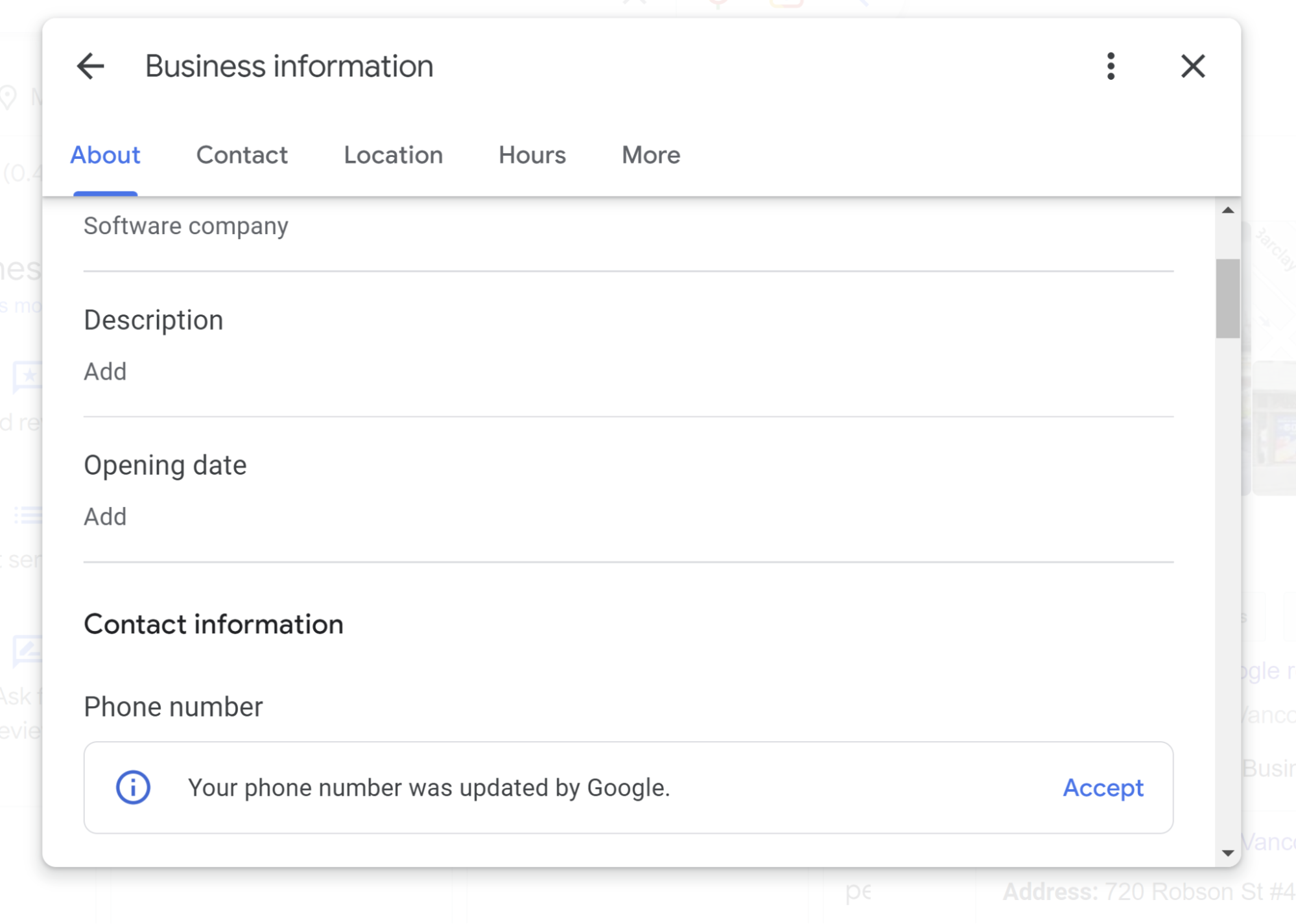
Local businesses can write a 750 character description of themselves.
Price Summary

Some business listings display a pricing overview of 1-4 dollar signs.
Controllable?
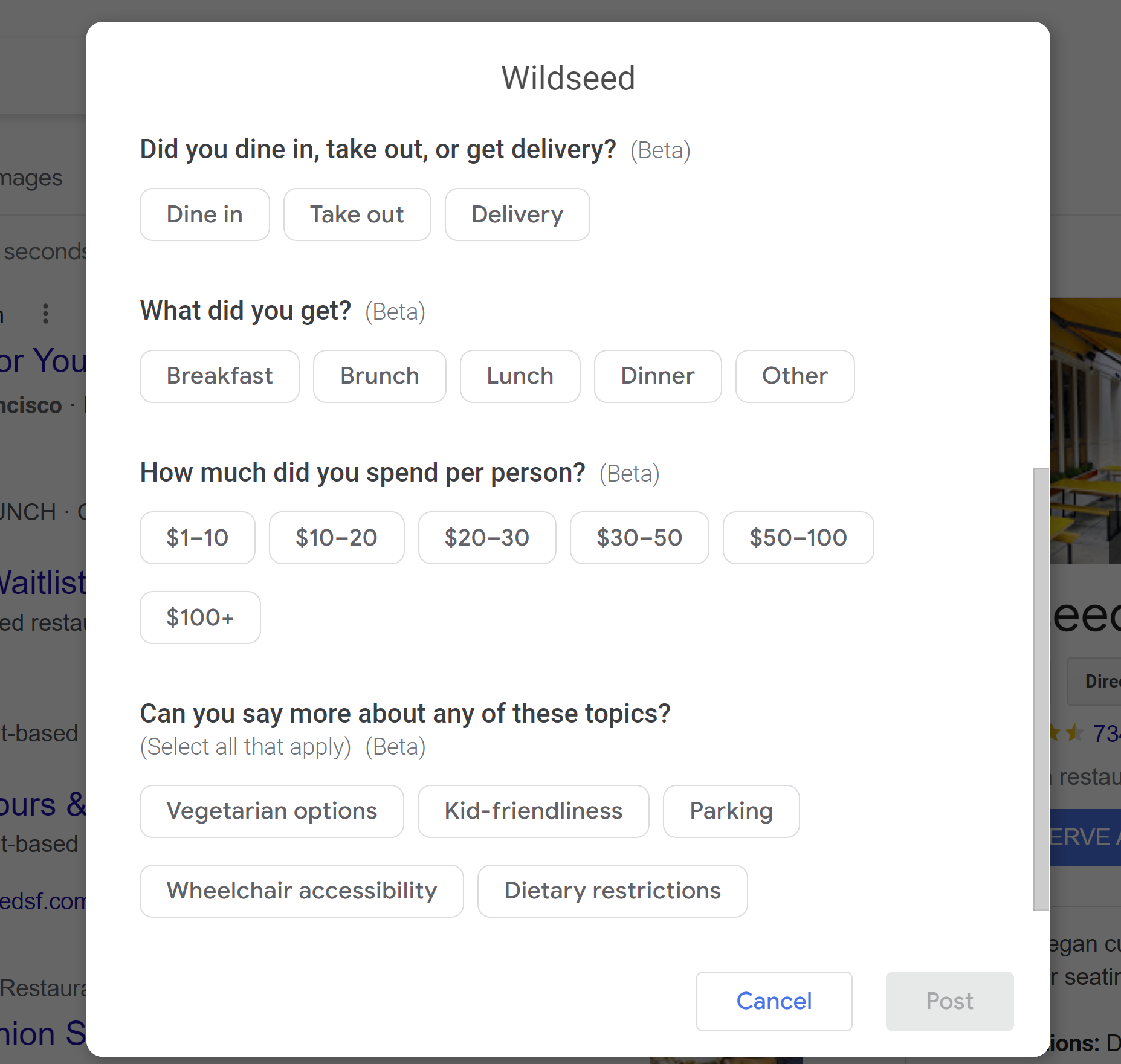
Controllable?
Unknown - Google asks reviewers to evaluate the prices they’ve paid at businesses, as seen above. There has been past debate over whether the prices published by local businesses on their digital menus influence these attributes, but Diamond Product Expert Ben Fisher has confirmed with Google that these elements stem entirely from UGC.
Menu links

Google offers a variety of menu options for businesses. Food and drink businesses have a standard menu that can link to a page on their website or a third-party platform, and menus can be created within Google itself, including menus with photos added to them. Additionally, some businesses can create service menus in Google.
Controllable?
Yes — where relevant, businesses can create or link to menus of goods and services.
Where to control?

With thanks to Damian Rollison, logged in owners of food and drink establishments should see edit menu links in the NMX, as shown above.
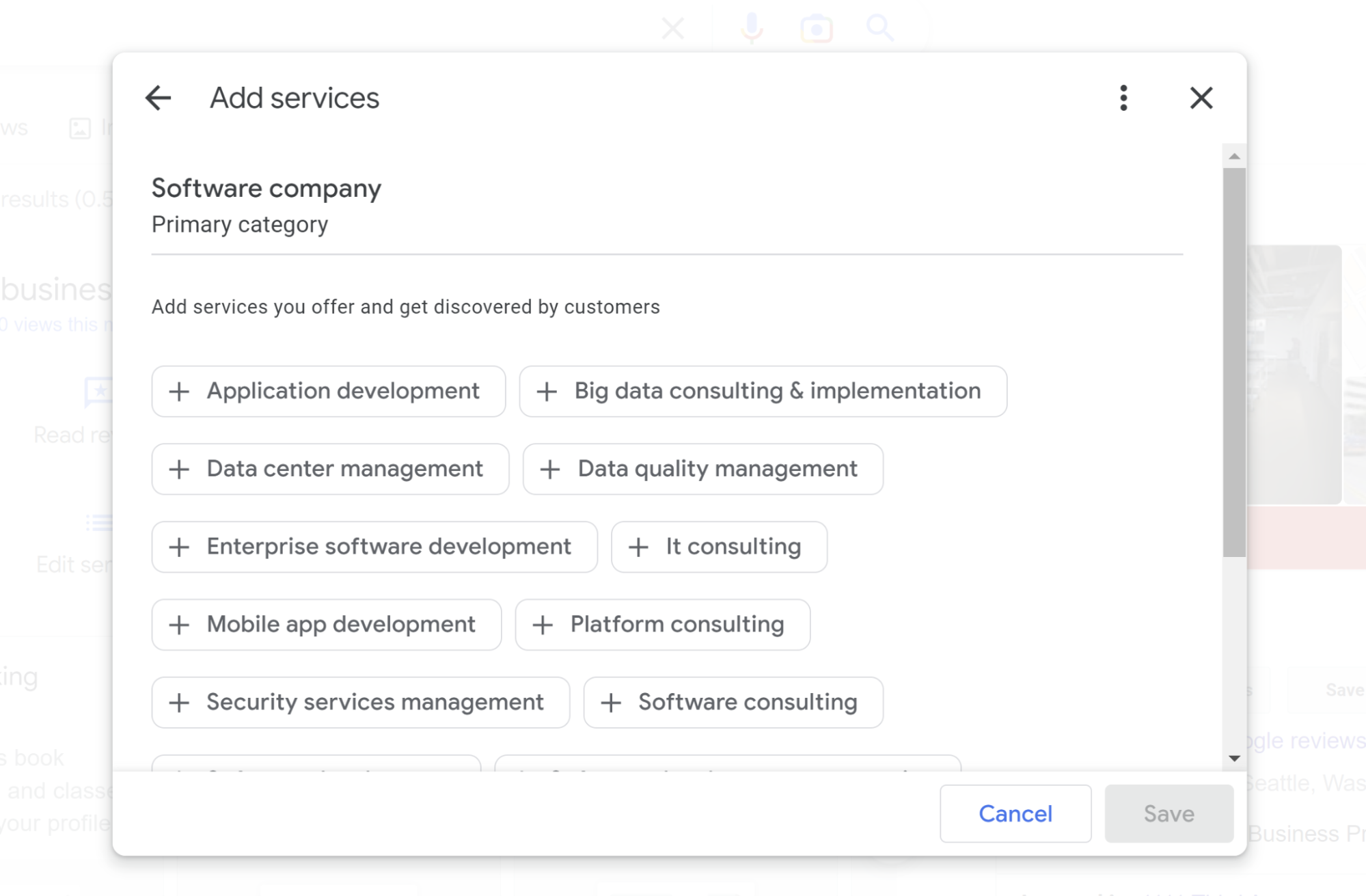
Businesses offering a menu of services can edit them under the “Edit Services” link in the NMX, including adding custom services.
Booking
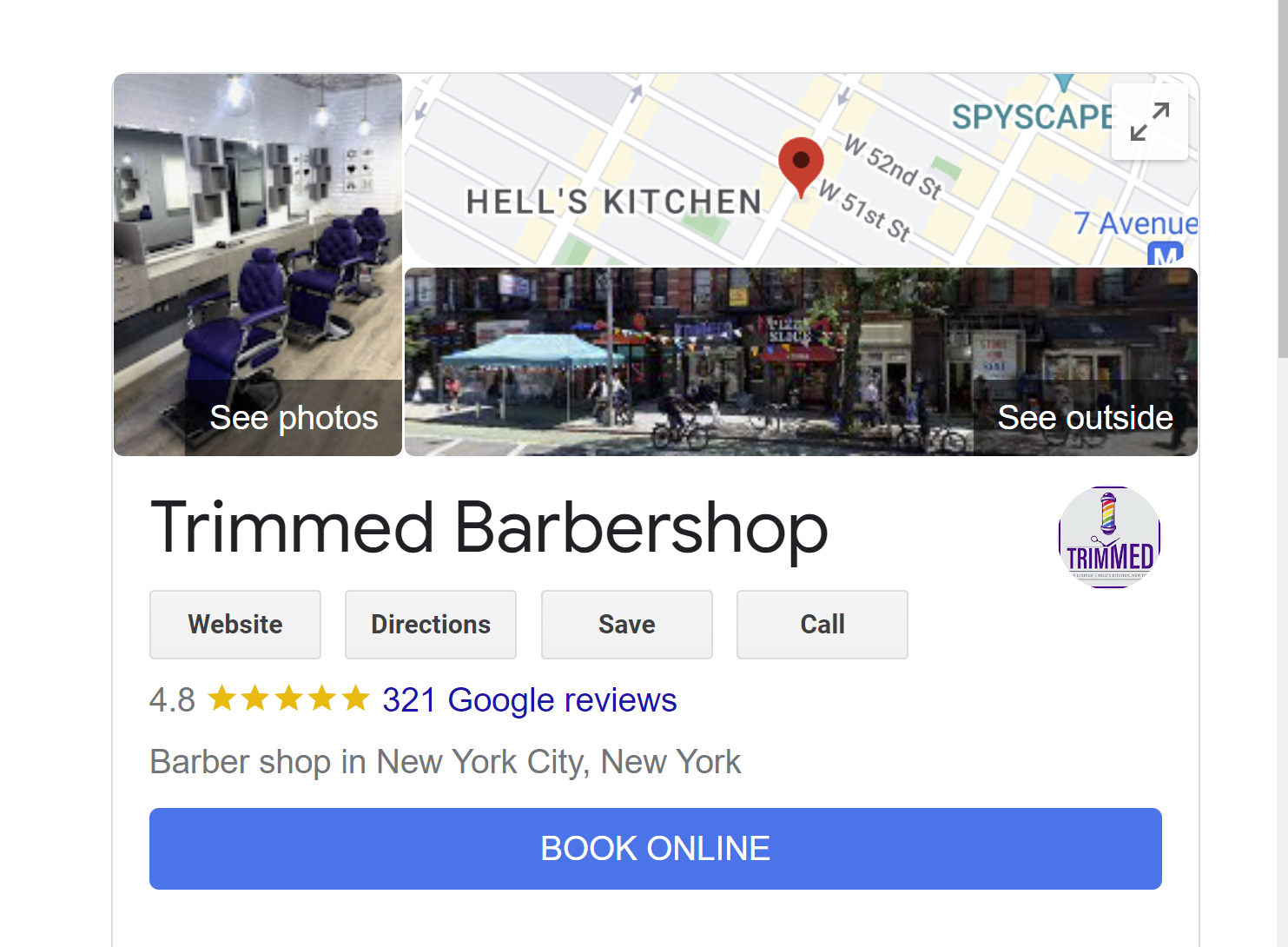
Businesses can feature several different booking and appointment functions on their listings, powered by a provider. For example, this instance on the listing of a dental practice stems from ZocDoc:
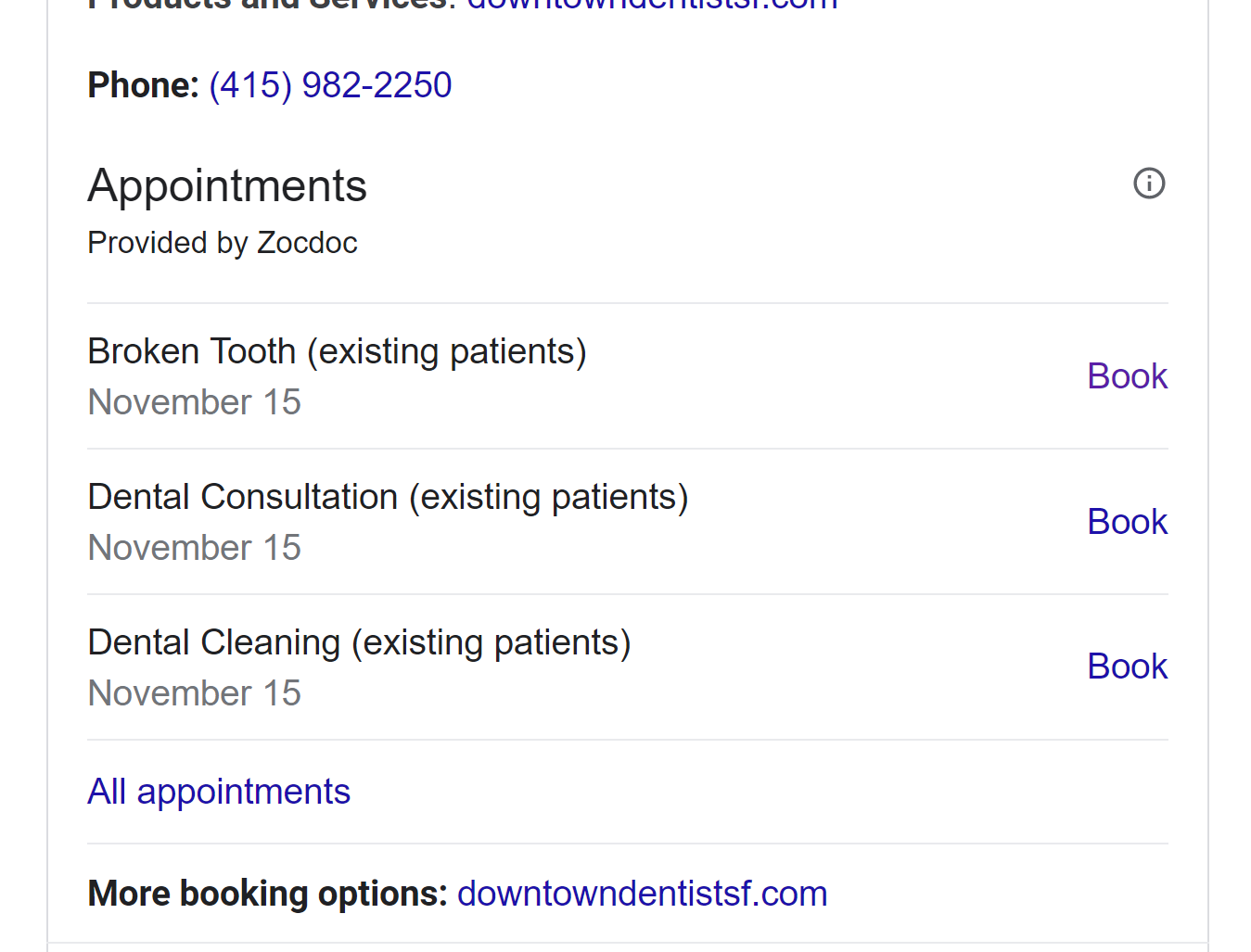
Controllable? Yes, relevant businesses can add booking and appointment features.
Where to control?
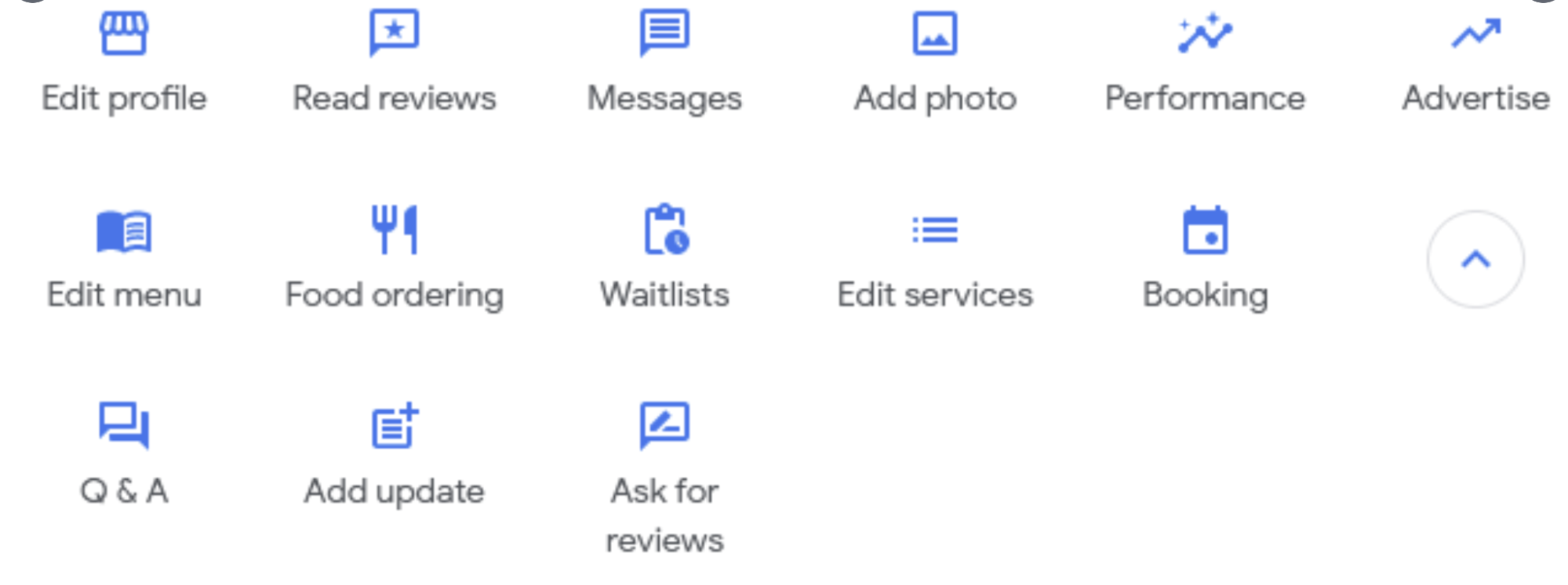
With thanks to Petra Kraft for the screenshot, applicable businesses should see a booking button in the NMX, as shown above. Businesses wishing to enable booking and appointment features must follow these instructions and can learn more about the Reserve With Google system here. Also pictured here is the “Waitlists” function tied to the Reserve with Google program for managing queues of potential diners.
See what’s in store
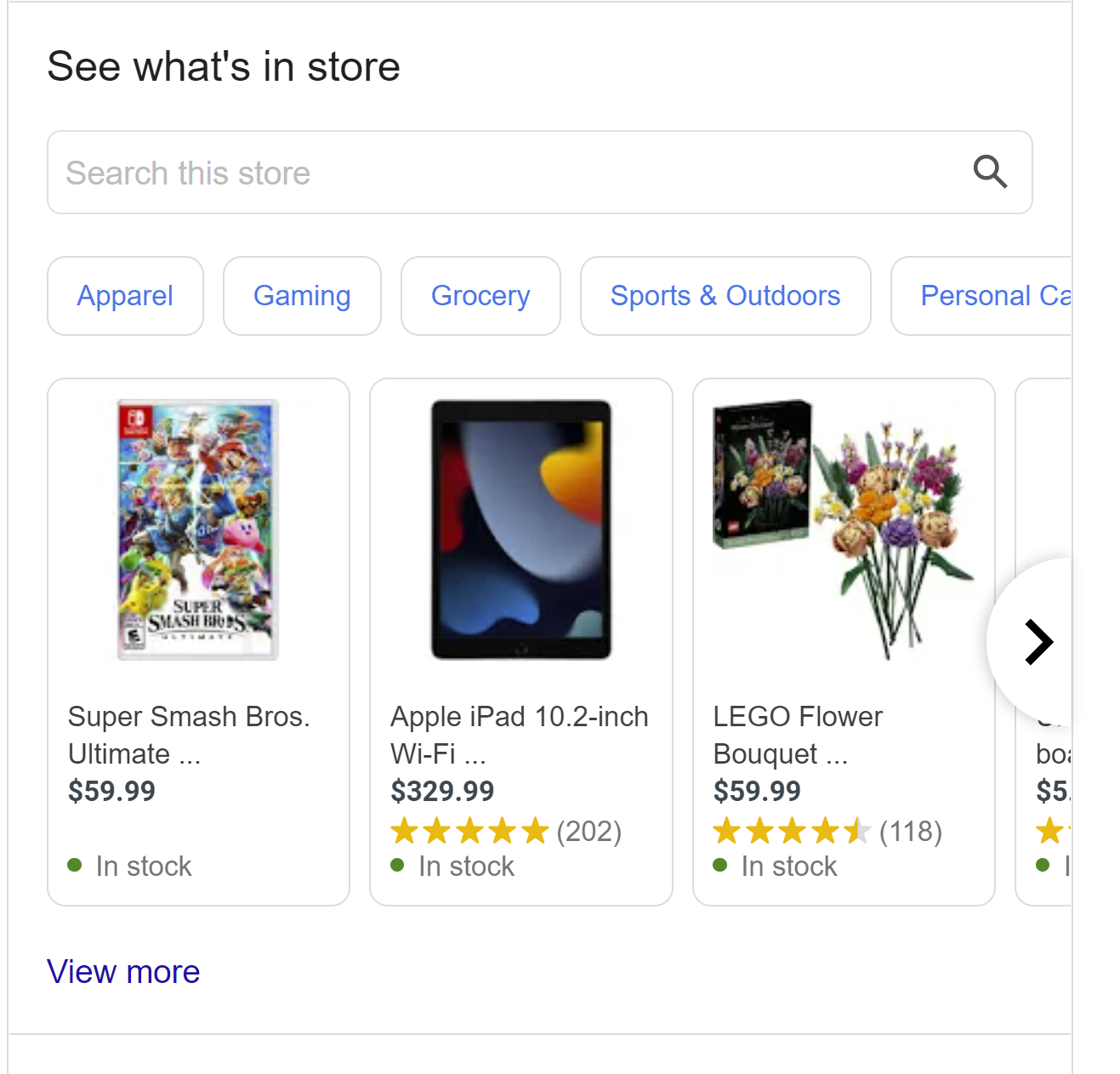
The See What’s In Store feature shows up on the Google Business Profiles of companies that have integrated the Pointy device into their point of sales system.
Controllable? Yes, if you are in the US, UK, CA, IE, or AU, have an appropriate point of sales system, and vend items with standard barcodes, you can apply to become part of this program.
Where to control? Google’s documentation states that, depending on how you signed up to be part of their See What’s in Store program, you will either be managing your inventory directly via Pointy or within your Google Business Profile.
Order online
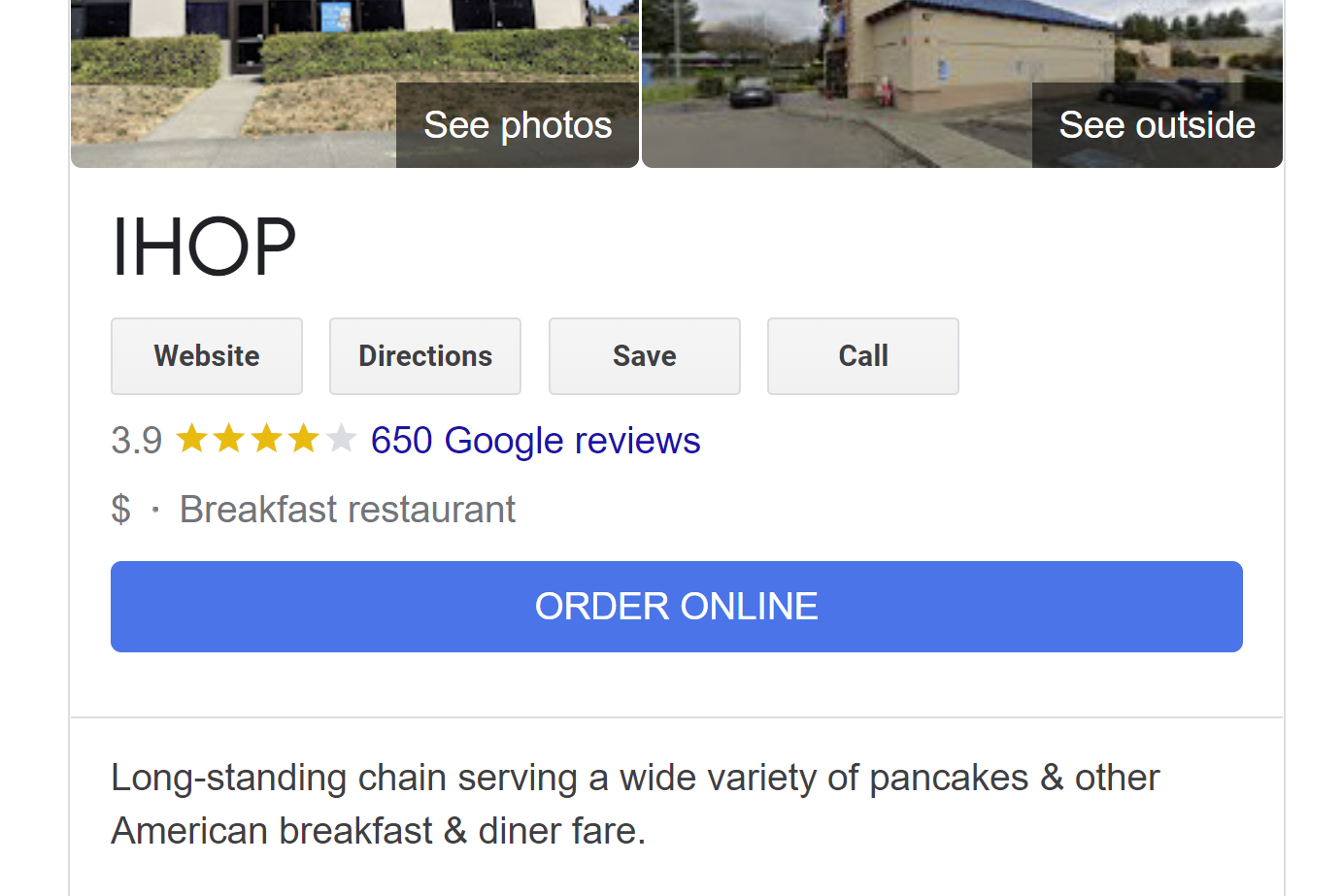
Some GBPs may feature an order online button . When clicked on, it brings up a list comprised of the brand as well as third-party services that facilitate taking digital payments in exchange for goods that can then be picked up or delivered.
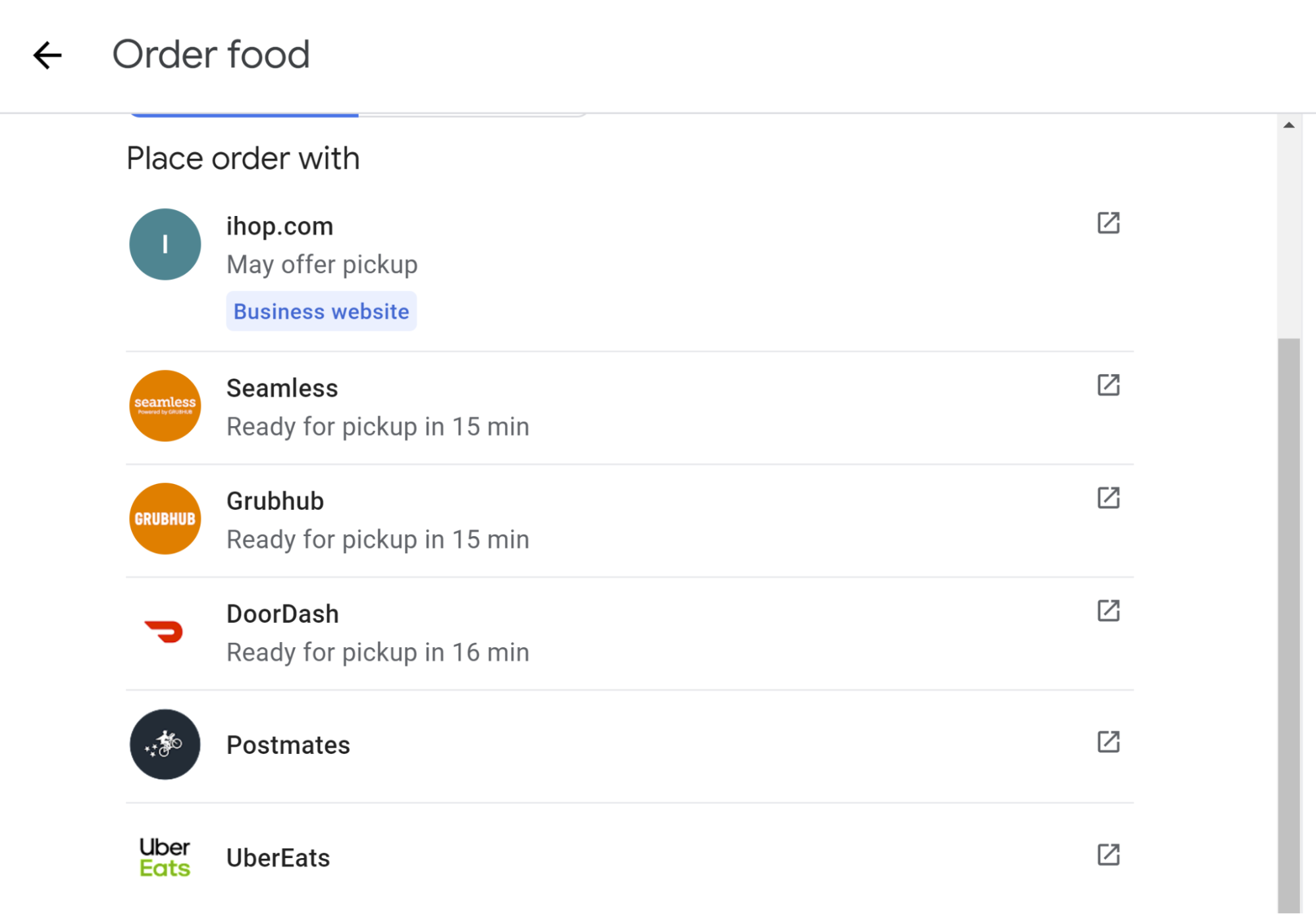
Controllable? Partly — business owners can opt into this, but there has been considerable controversy over the years about whether third-party providers in the delivery business are more of a bane or blessing to local brands, and whether or not its right for Google to promote these types of services on GBPs.
Reviews from the web

This features a rating summary and links to relevant third-party review sources, determined by Google.
Controllable?
Partly — owners can’t dictate which 3rd parties Google chooses, but they can work to build up positive reviews on featured sources.
Profiles

Google business profiles can feature icon-based links to major social media sites where the company has established a presence.
Controllable? No — there is no field in the NMX for adding your social media profiles, but best practice advice is to be sure they are featured on your website so that Google can easily associate them with the business.
Popular times
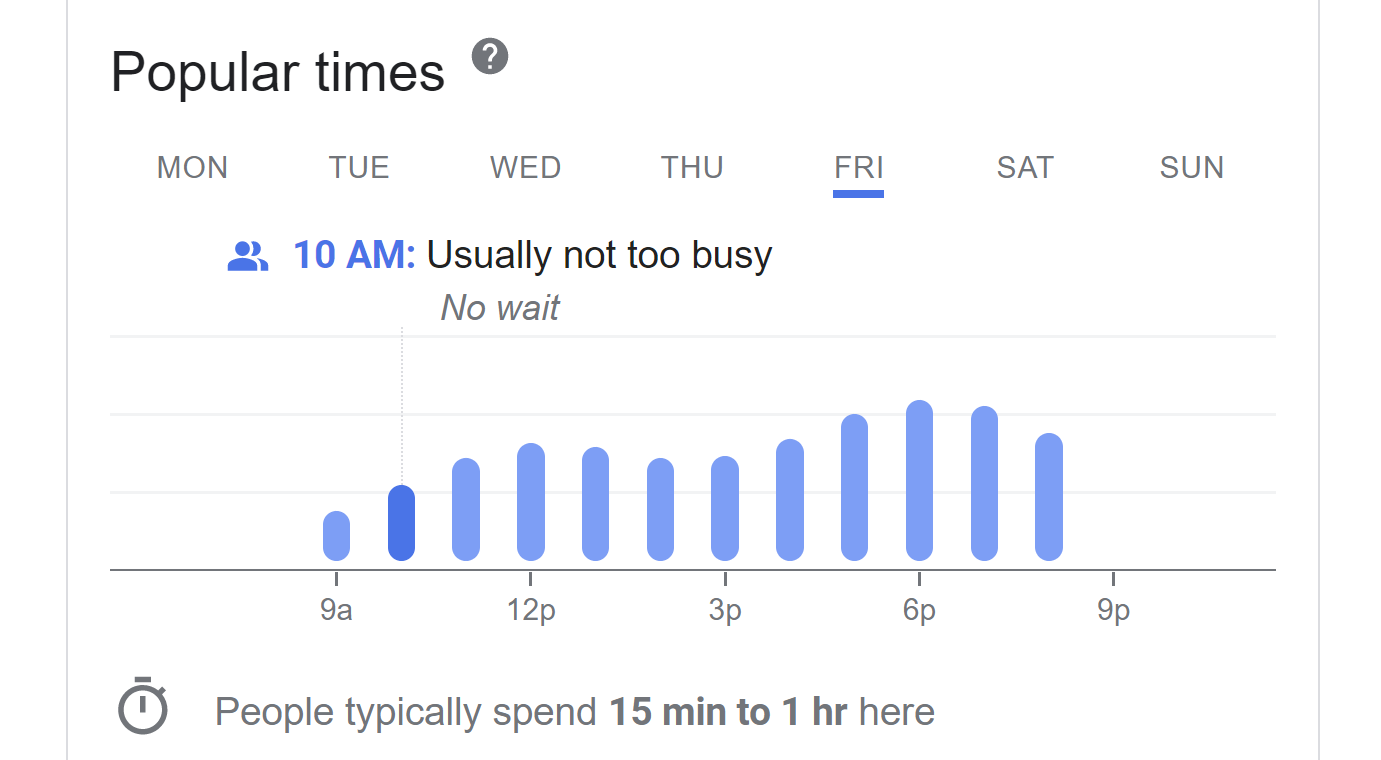
This Google Business Profile information is drawn from users who have opted into Google Location History. It’s meant to help users plan visits. It’s conceivable that this could be utilized as a ranking factor.
Controllable?
No.
Chat/Messaging
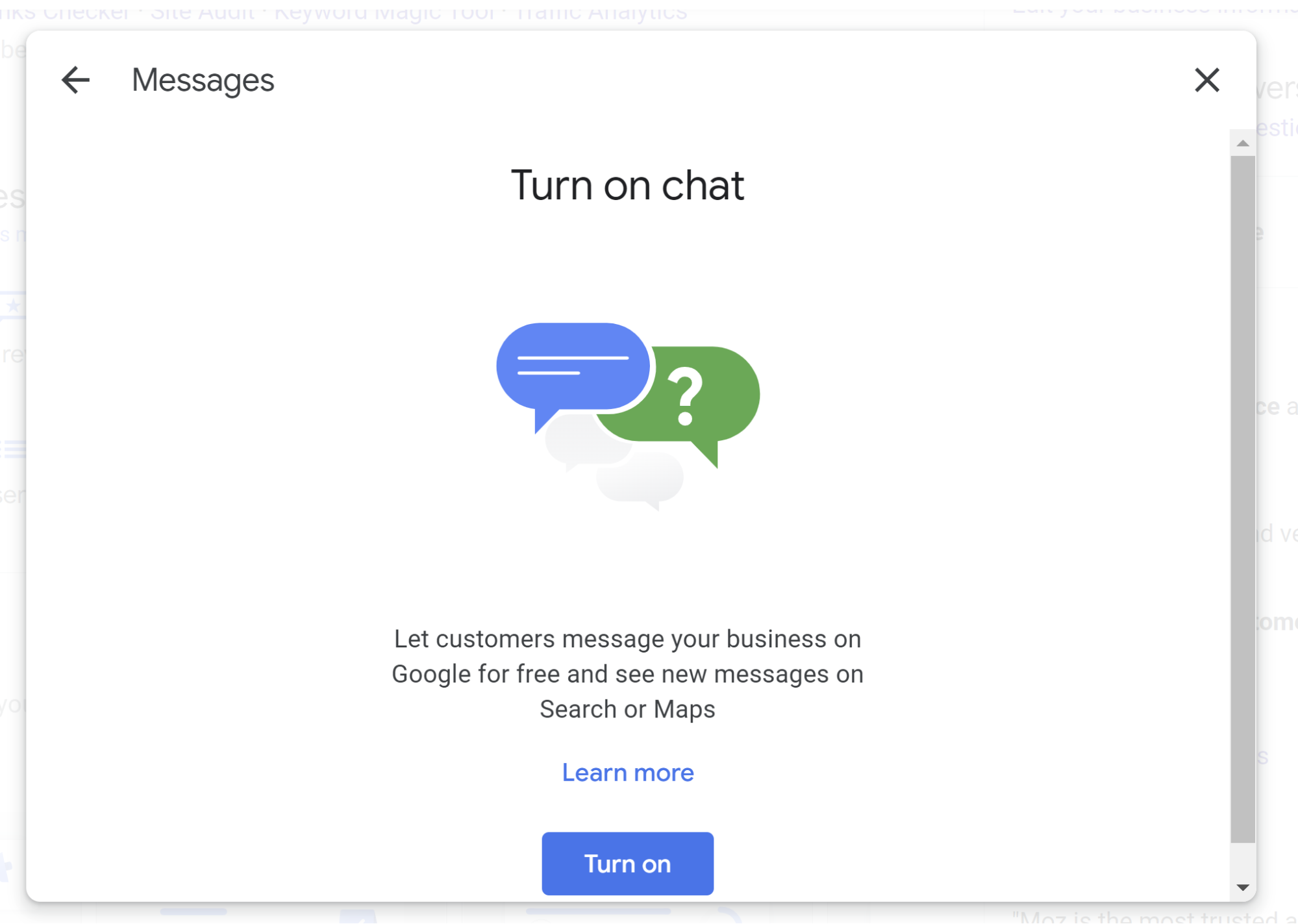
This feature enables customers to leave messages for businesses and receive responses.
Controllable? Yes — businesses can choose to opt into this.
Where to control? Google’s branding of this feature is messy. In the NMX it is labeled Messages, but when opting into the program, you will be shown a popup asking if you want to turn on “chat”, and customers will see buttons labeled “chat”. You can read more about this feature here.
Performance
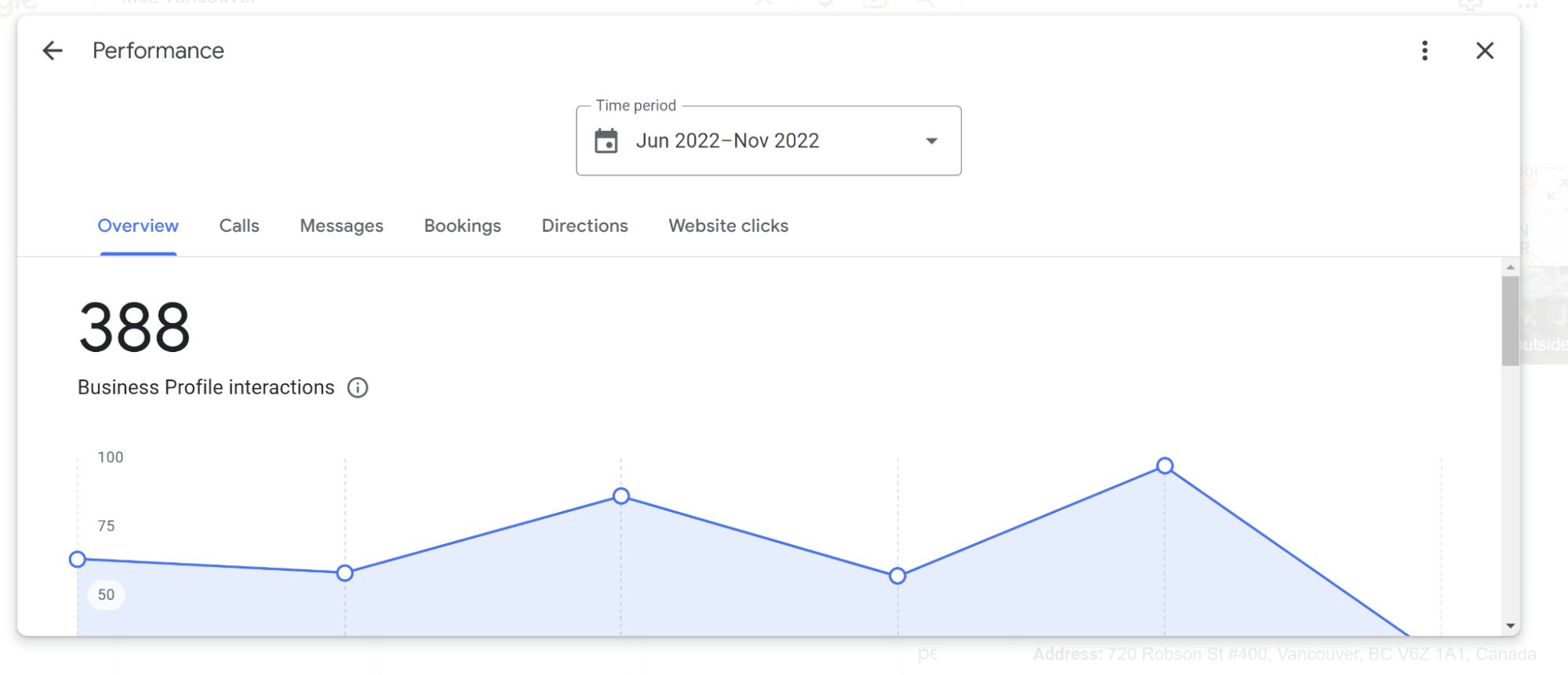
The performance tab in the NMX takes you to the analytics data historically known as Insights. This is where Google reports on how the public is interacting with your listing.
Controllable? No — apart from changing the date ranges in this interface, this is not data you can edit.
Advertise
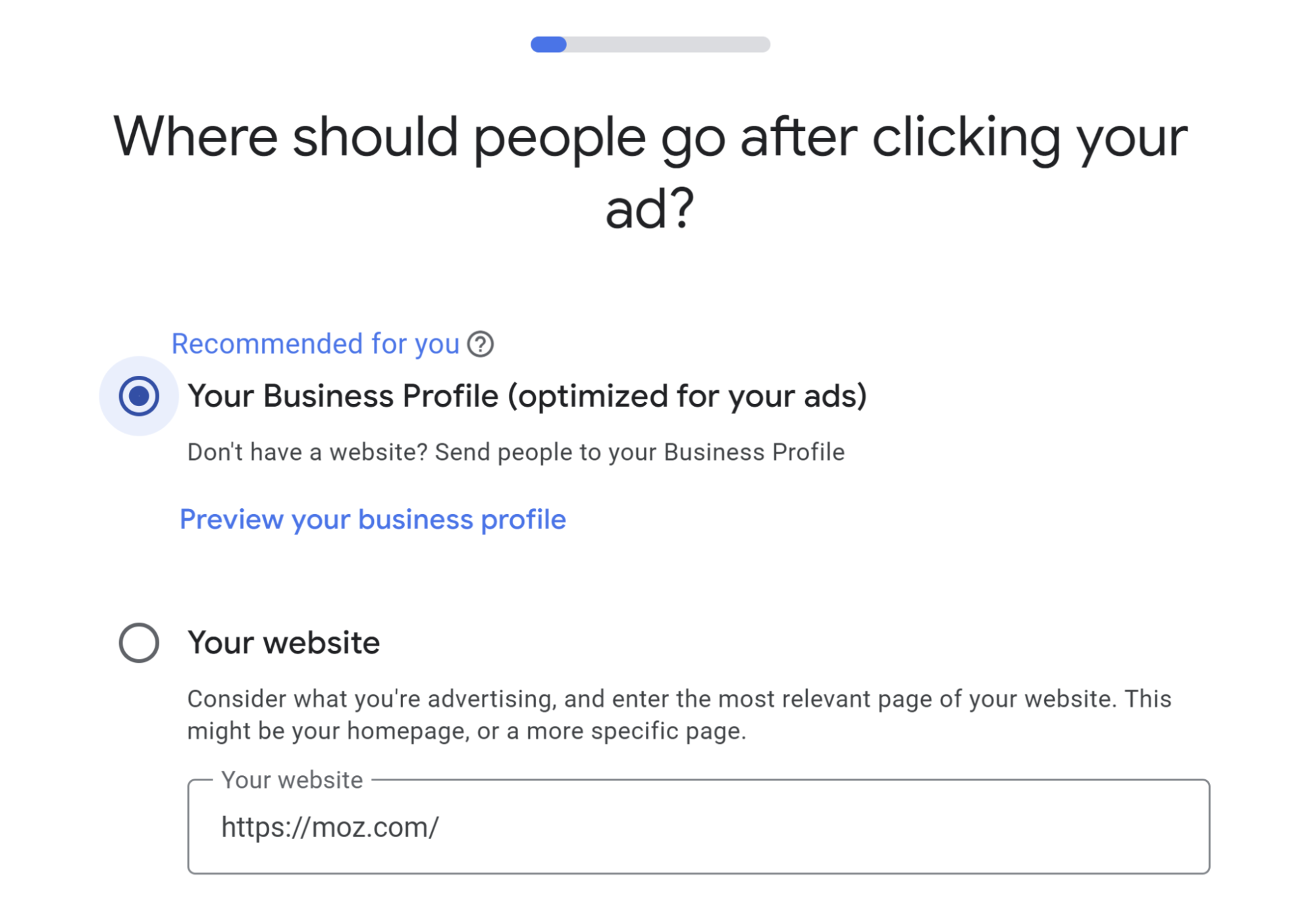
This link in the NMX takes you to where you can sign up to run paid advertising.
Controllable: Yes — local businesses can opt into Google Ads.
Admission
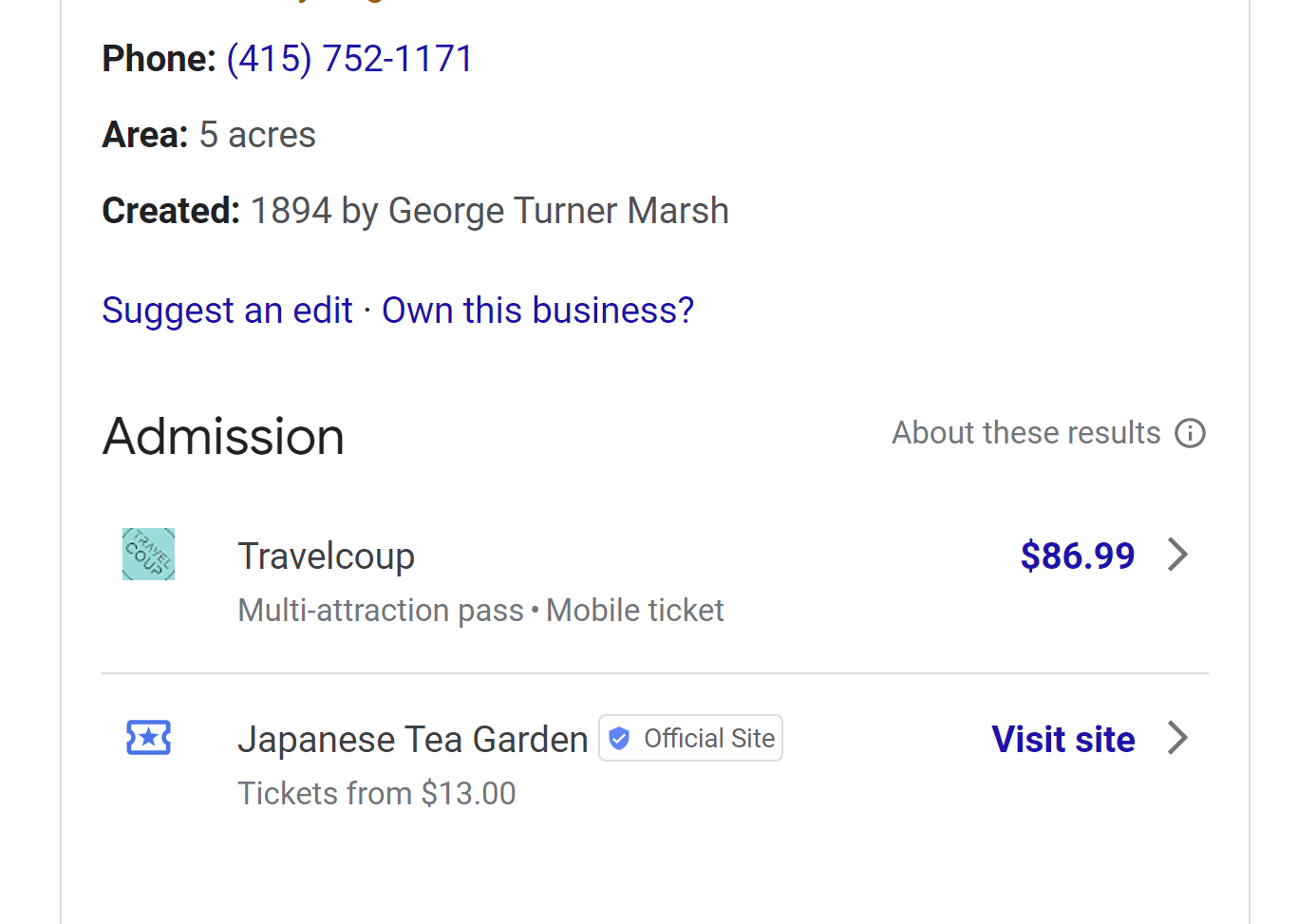
Some attractions feature admissions information on the Google Business Profile, with price comparisons for tickets.
Controllable? Not directly, though attractions can be sure pricing information is clear on their websites. This is a controversial feature, because Google states the following:
“Tickets are ranked based on several factors, but mainly by price. Official tickets are given preference in the ranking. Ticket suppliers don’t pay Google to appear in these search results and can’t pay to influence their ranking. Prices are based on standard adult entry and may vary depending on the specific ticket types, dates or eligibility for other discounts. Displayed currencies may differ from the currencies used to purchase tickets.”
However, as can be seen in my above example of the GBP of the Japanese Tea Garden in San Francisco, the official website of the attraction is being outranked in the Admissions results by an entity that is not official and is also more expensive, contrary to Google’s statement of how this feature should work.
Experiences
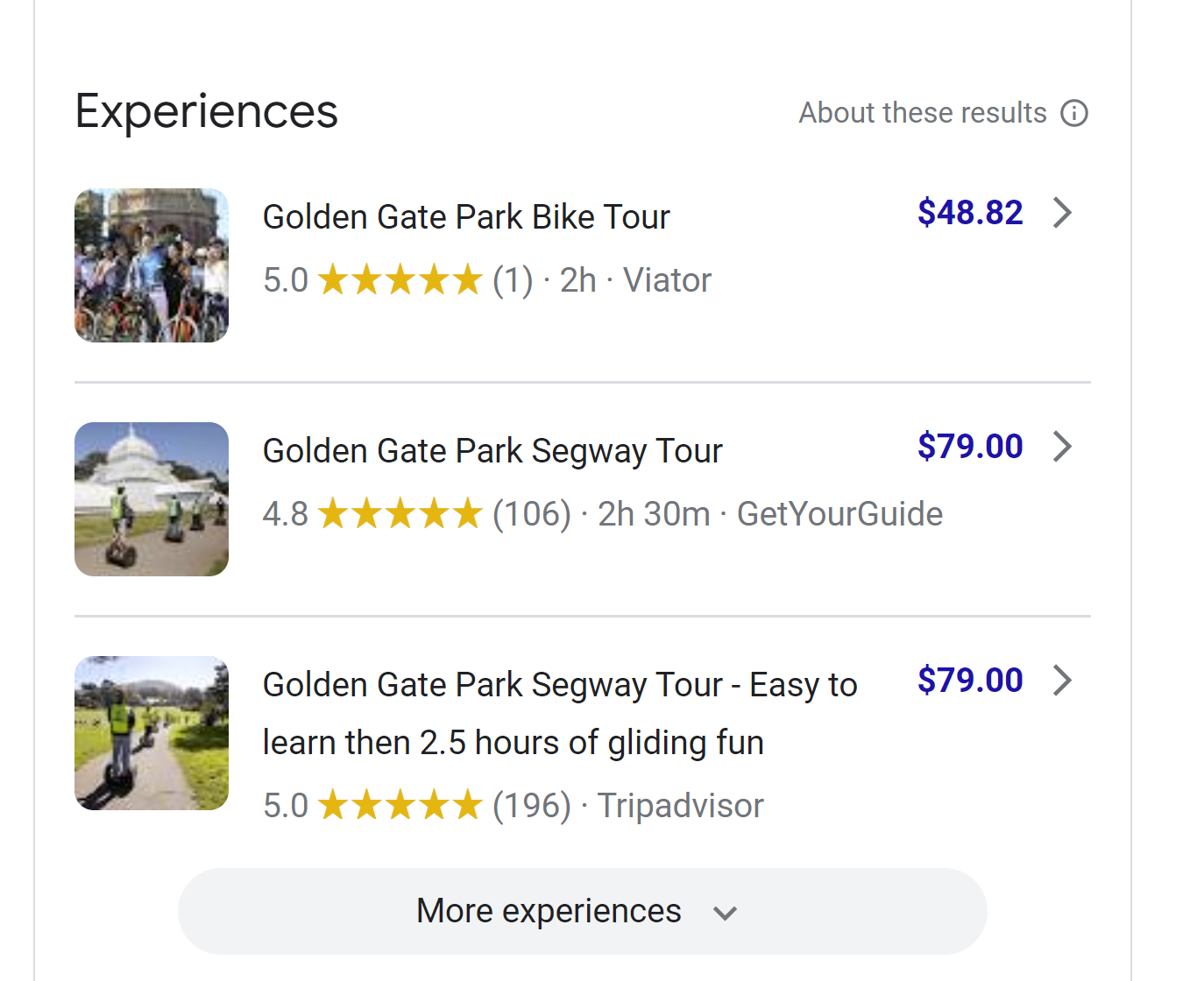
Some Google Business Profiles may included nearby experiences. This screenshot is also from the GBP of the Japanese Tea Garden in San Francisco, and is displaying other things to do in Golden Gate Park.
Controllable? No — this information is provided by Google, not the business owner.
Opening date
It has been some time since I have seen an opening date featured on a GBP, though I frequently spot them in local pack results, but businesses do have the ability to tell Google the month and year in which they were founded.
Controllable? Yes — businesses can provide this information.
Where to control?
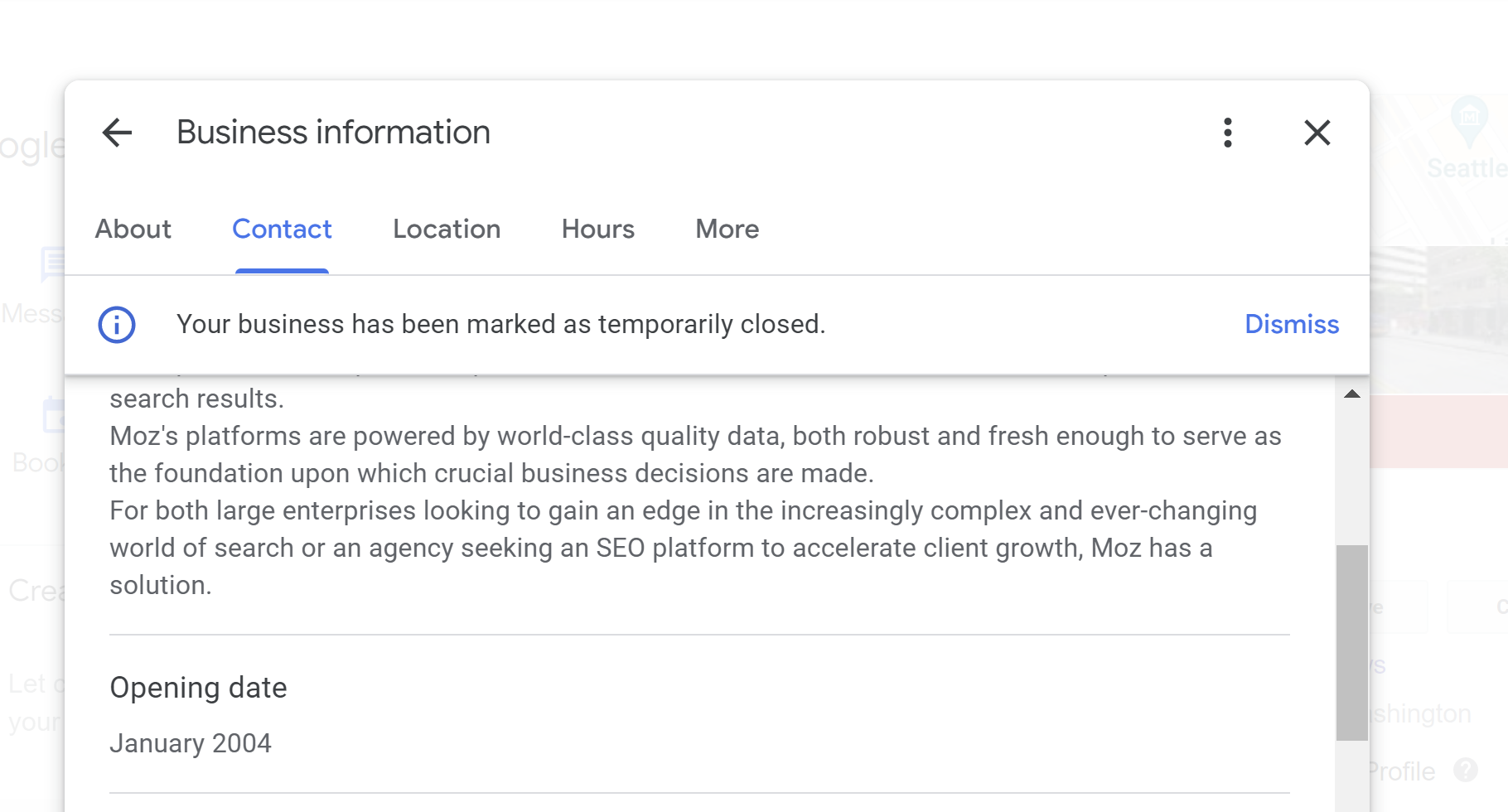
In the NMX, click on “Edit Profile” and then click on “Contact” to find the field for adding your founding date.
Lodging listings
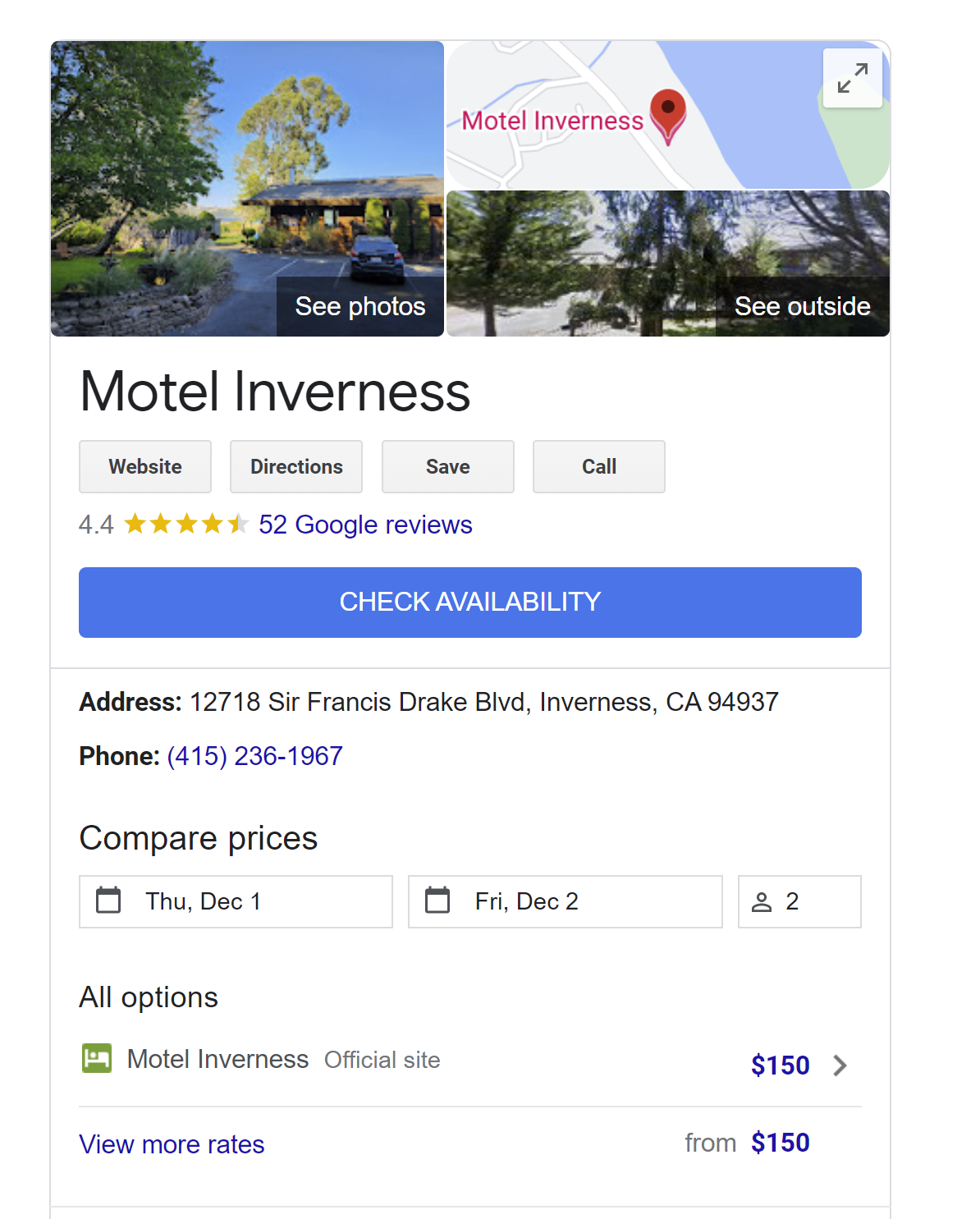
Hotel profiles are unique to the point of being almost a different style of Google listing. They feature many distinct elements including price comparison, environmental practices, availability-based booking, and other features.
Controllable?
Mostly — owners have a variety of features they can enable and manage, though Google pulls in many elements from third parties including the public.
Where to Control? Hospitality marketers should familiarize themselves with these guidelines from Google.
Summing it up
Hopefully, this guide will act as a trusty flotation device the next time you need to manage something in your Google Business Profile via the New Merchant Experience. What I’ve learned from writing it is that if you click around long enough in the NMX, you can find most things, with a few exceptions like those that have been noted by friends like Damian Rollison and the good folks over at BrightLocal and Online Ownership.
This column has covered what the main features are and where to control them, but if you’re ready to move on to making the most of each element, read the popular Beginner’s Guide to Google Business Profiles for optimization and marketing tips. If you want to understand where GBPs fit within the larger framework of local search marketing, read The Essential Local SEO Strategy Guide for nine chapters of free, expert advice. Or, if you feel you’d benefit from investing in a more guided experience, consider registering for our video-based Local SEO Certification. Google will just keep changing - that’s a guarantee! Our best strategy, then, is to embrace continuing education. With determination and knowledge, we can all swim these laps for the win!


